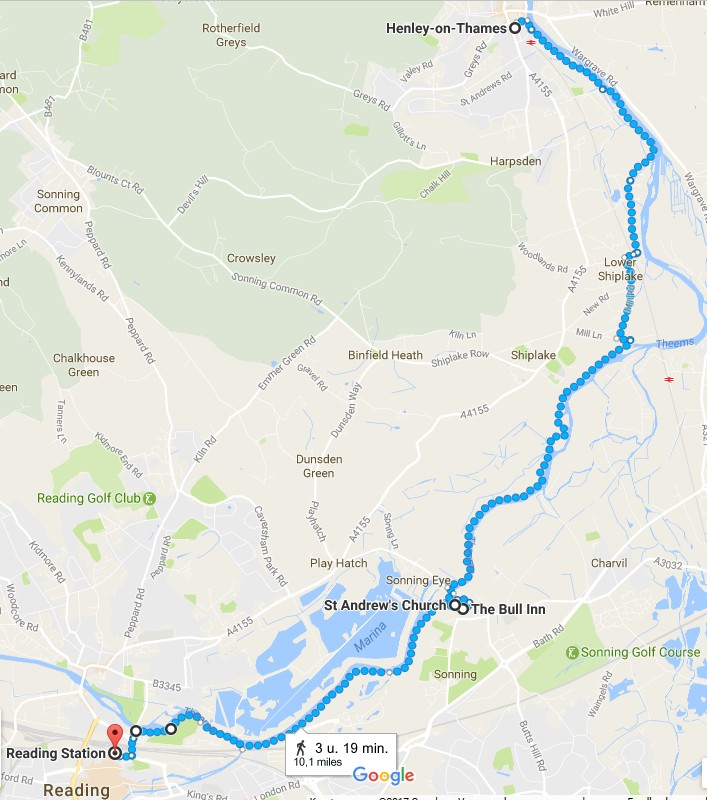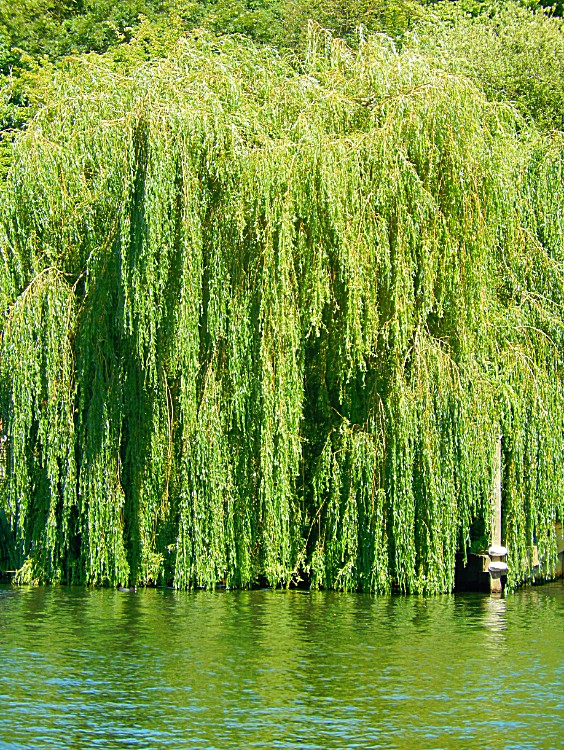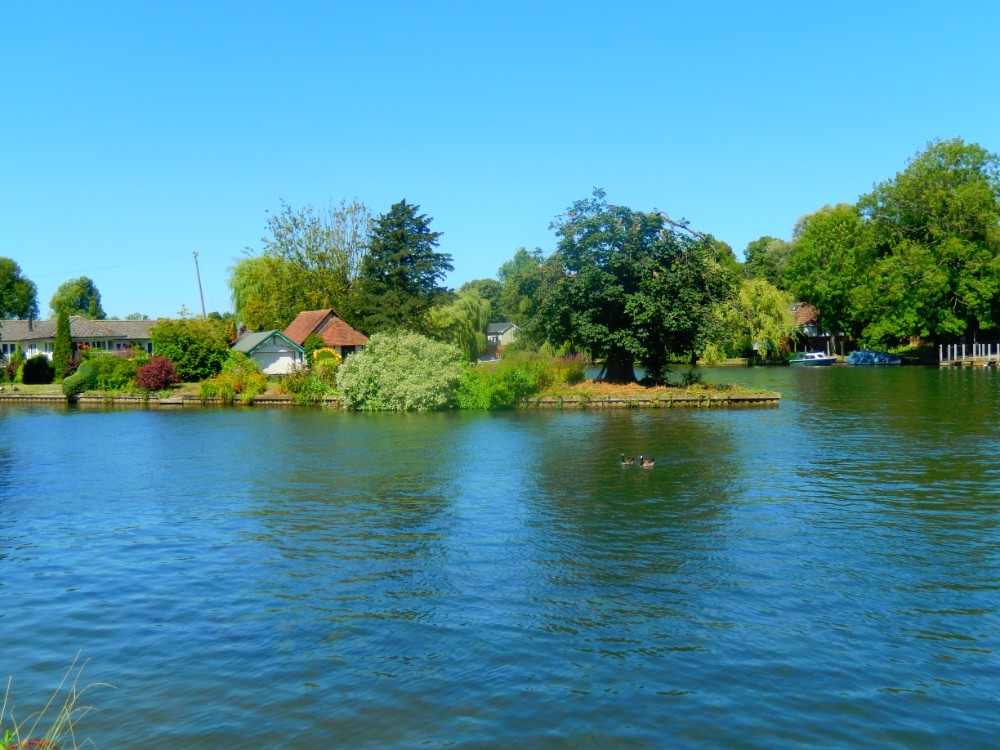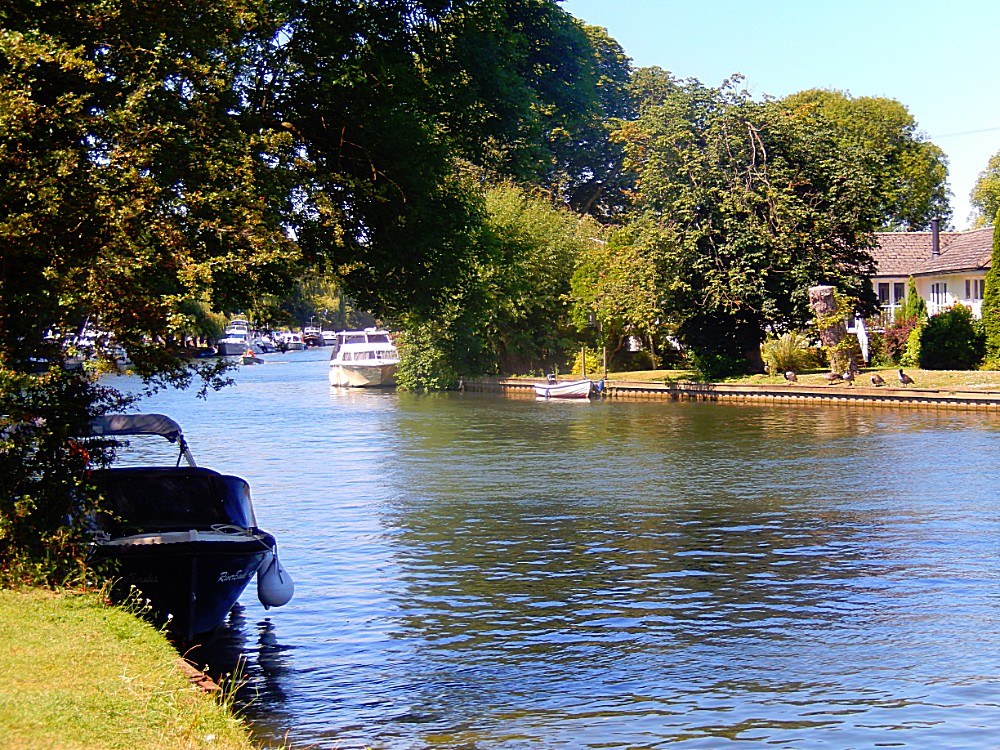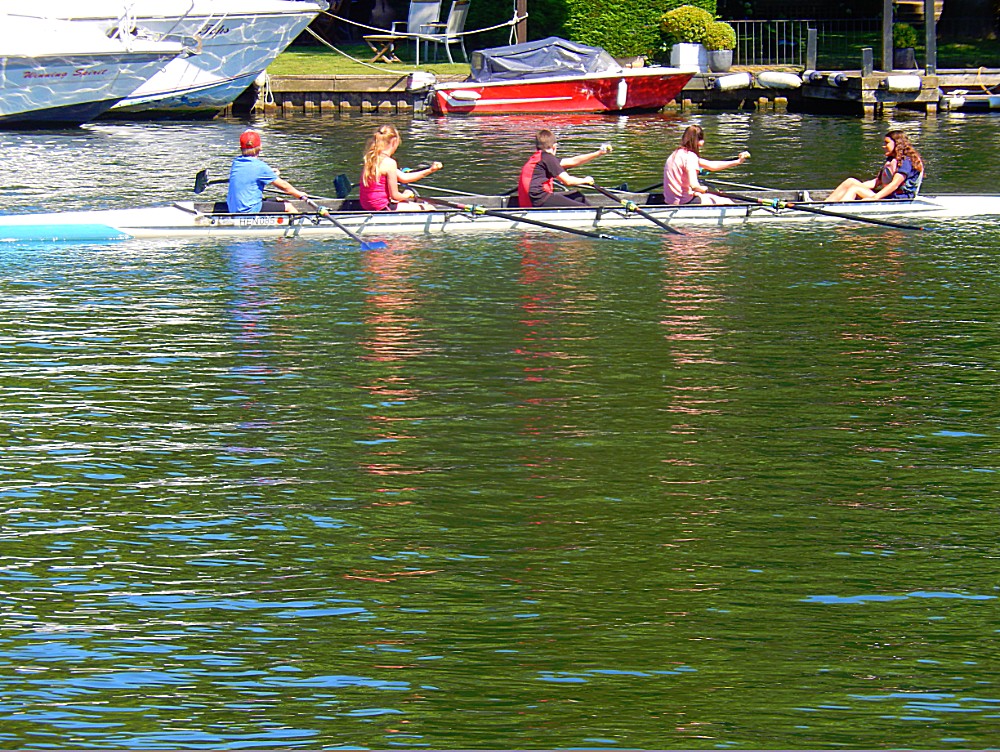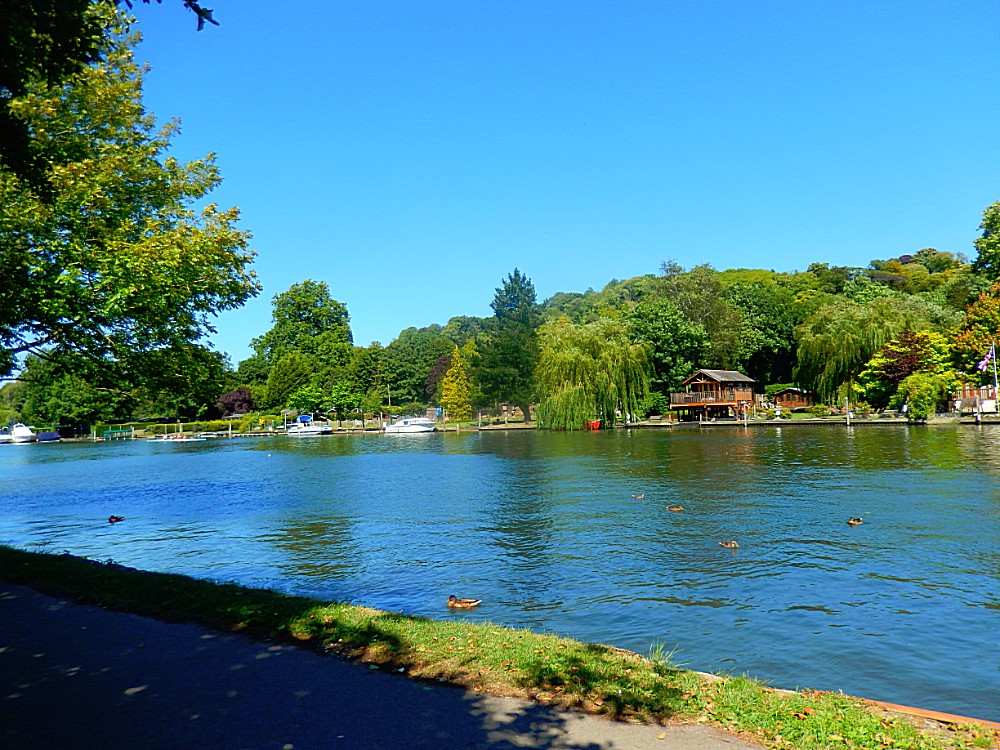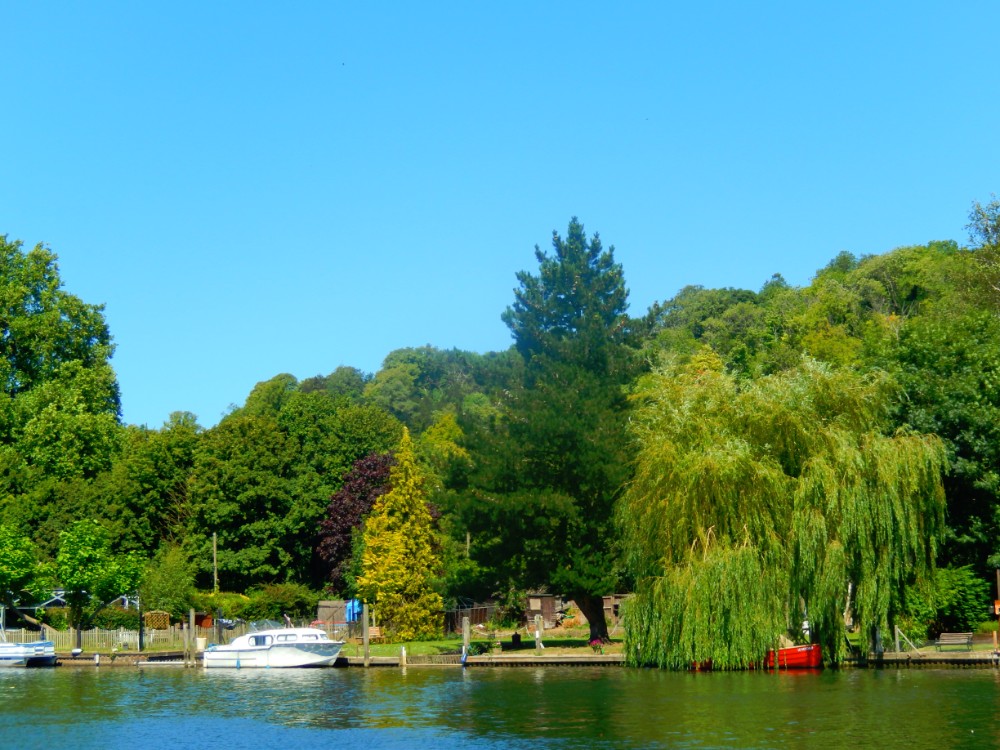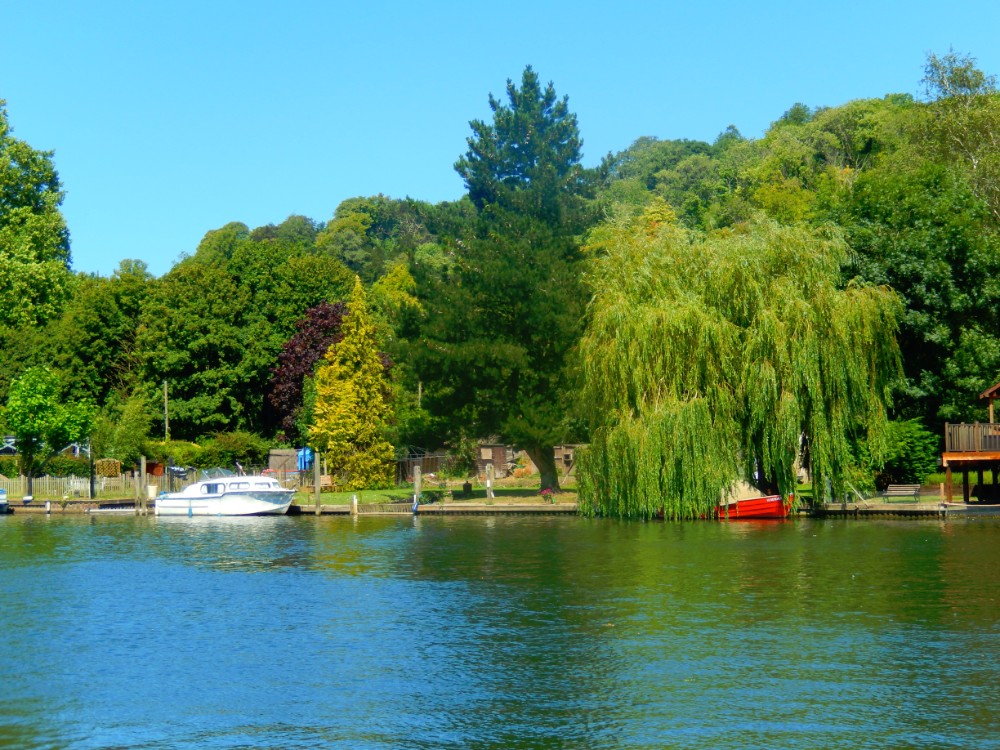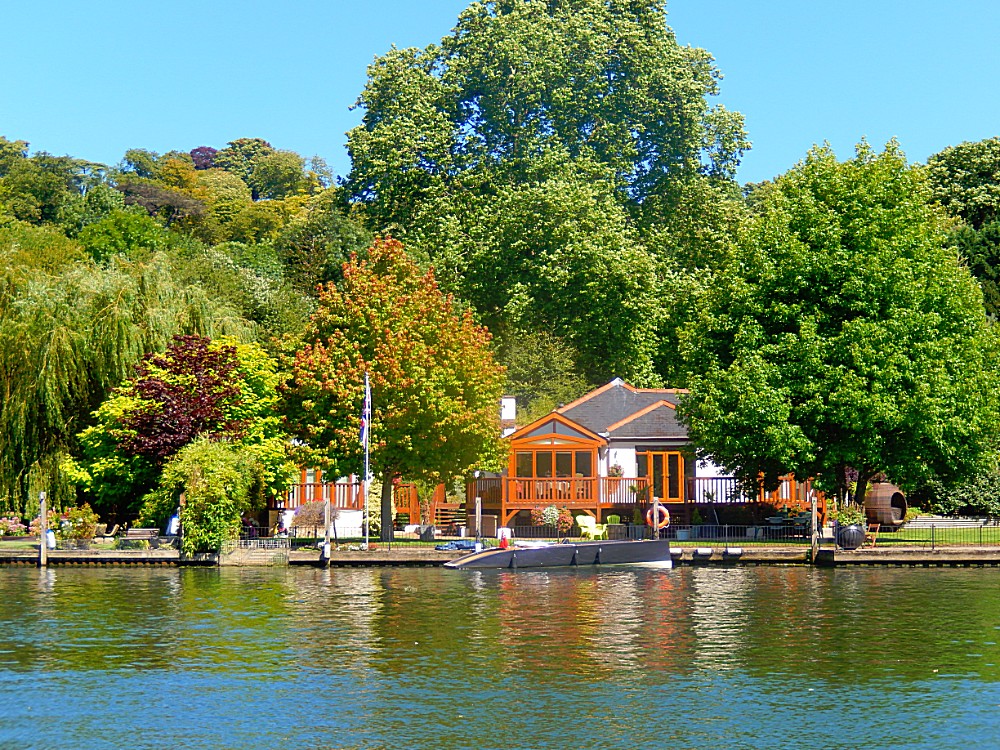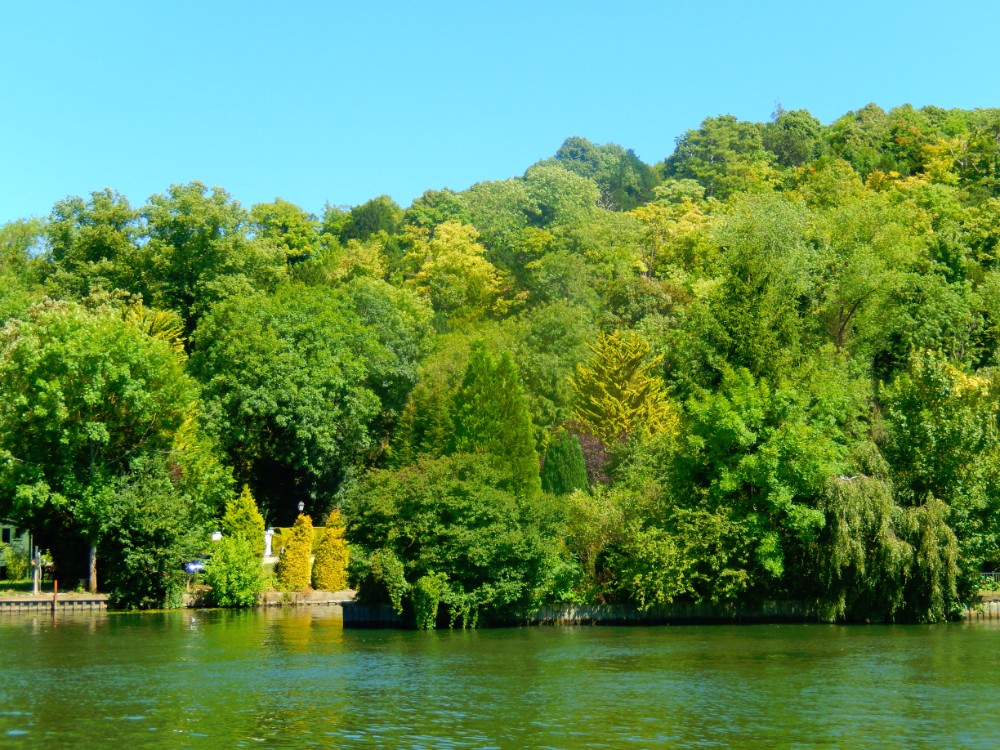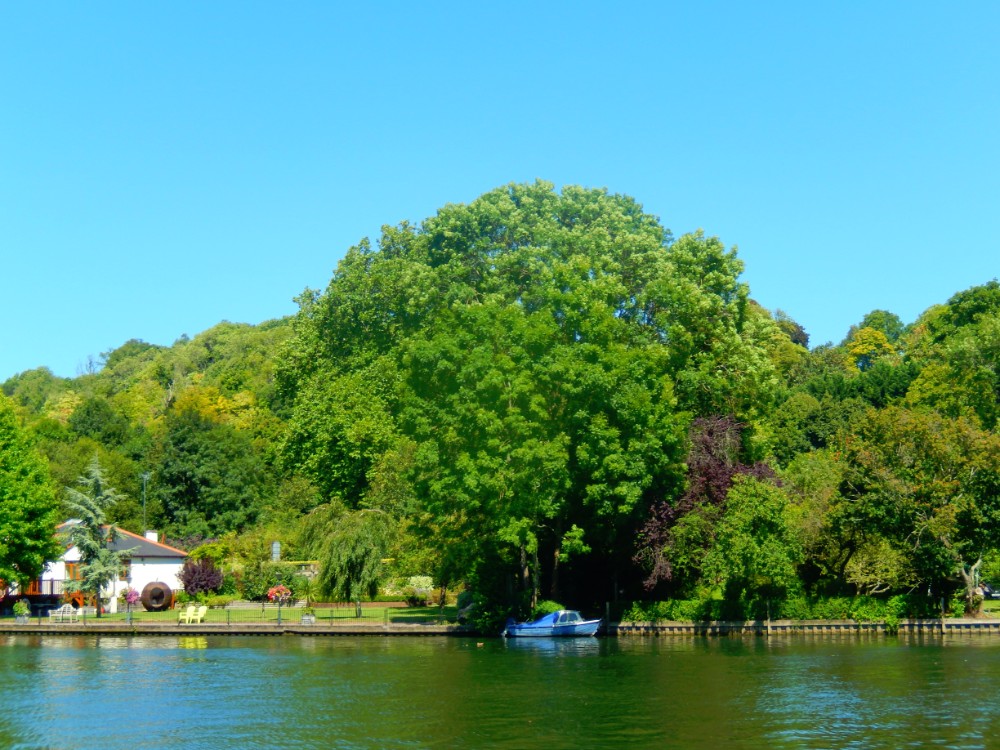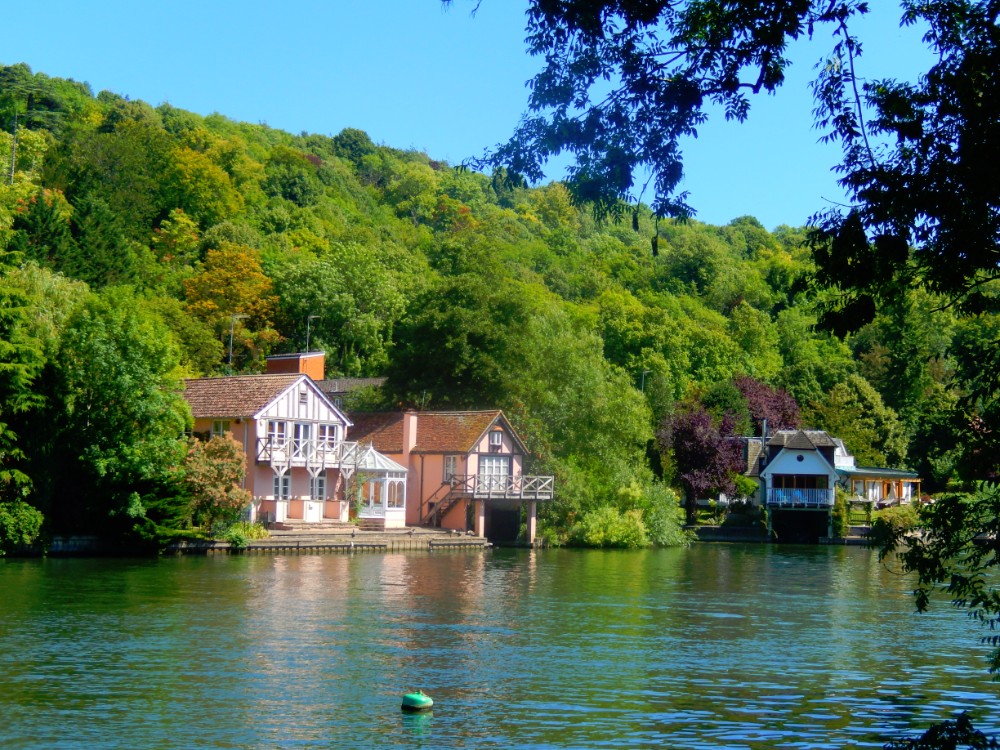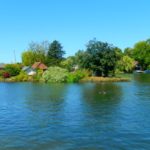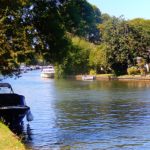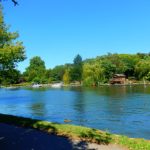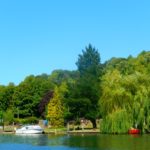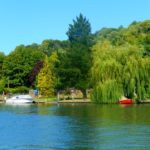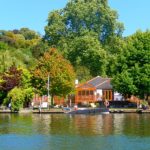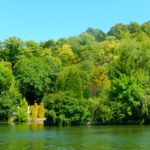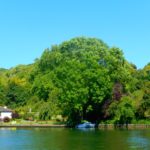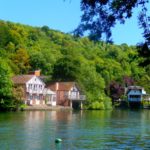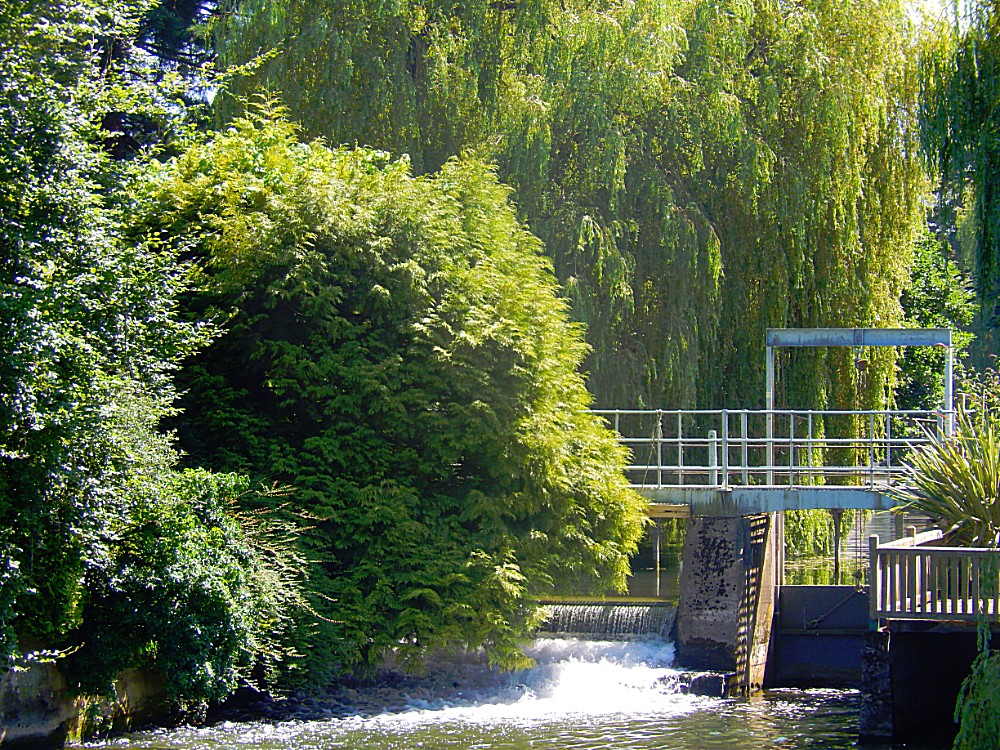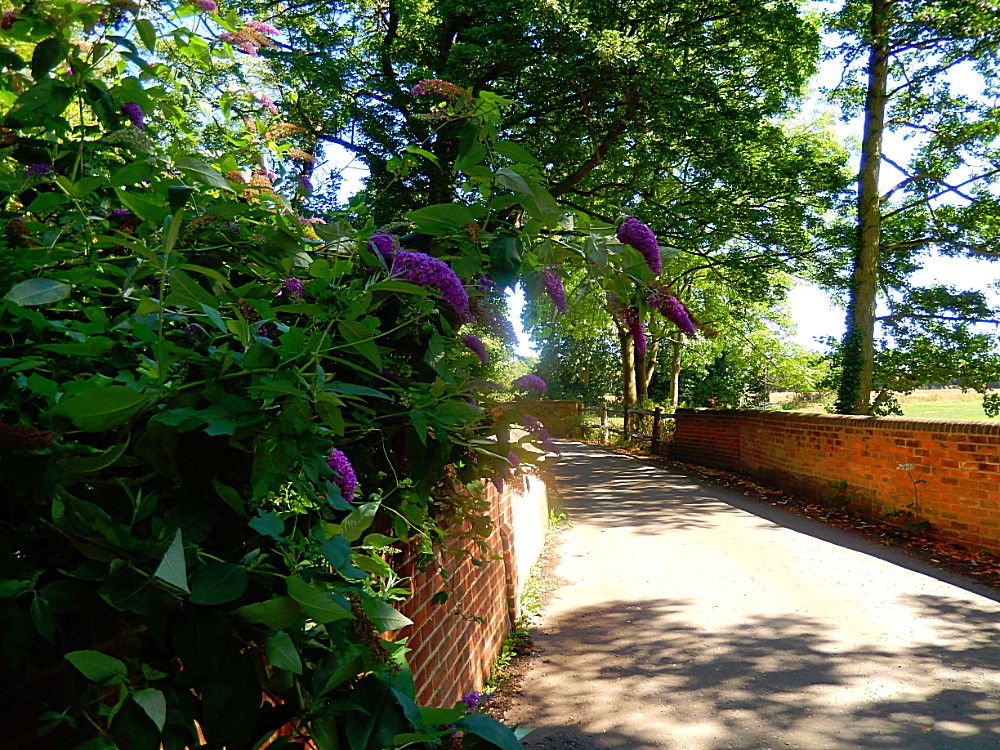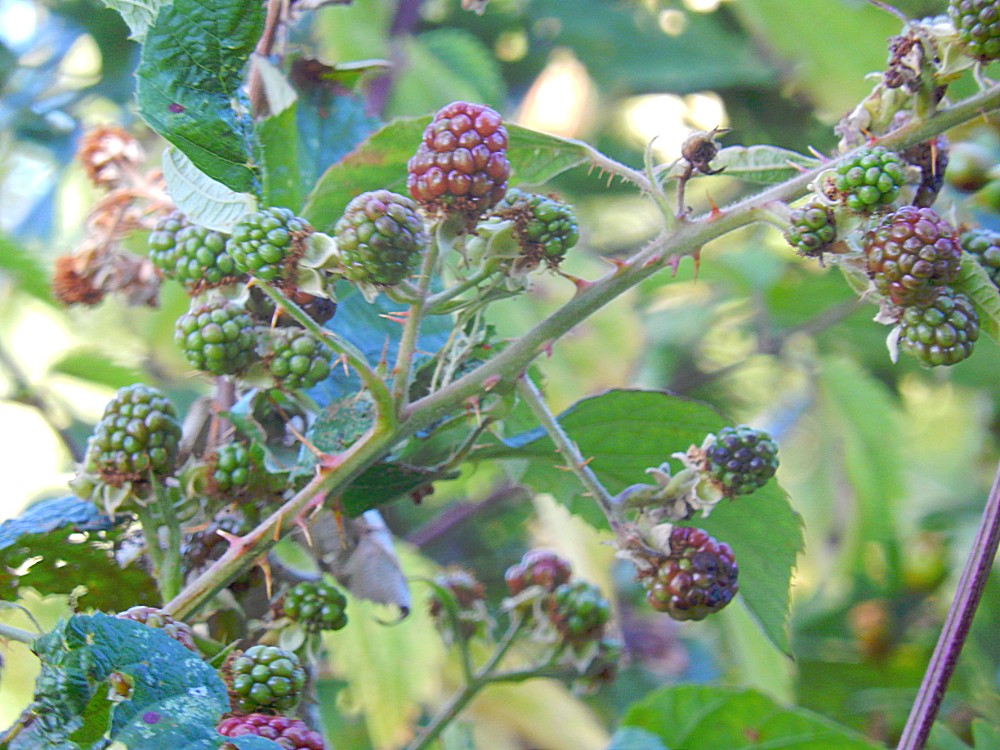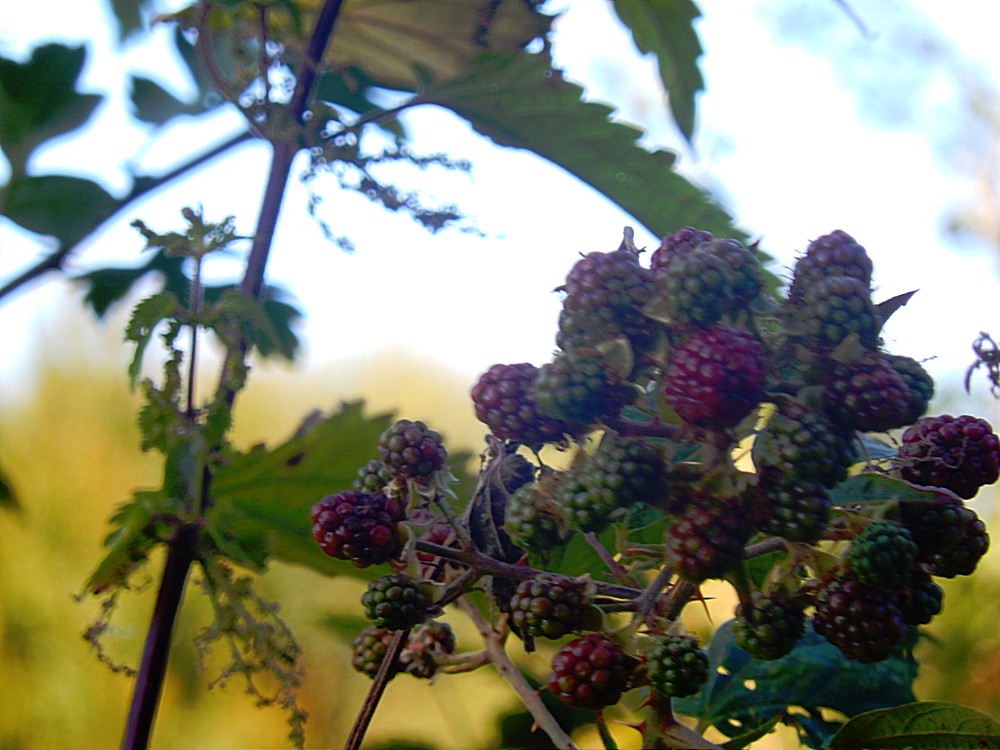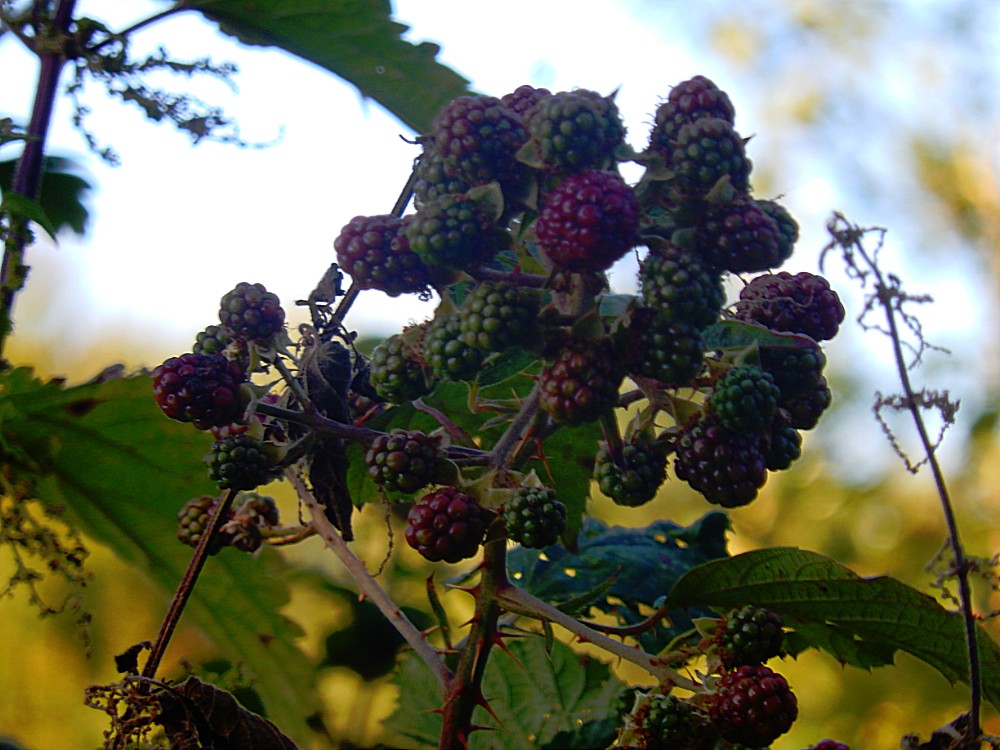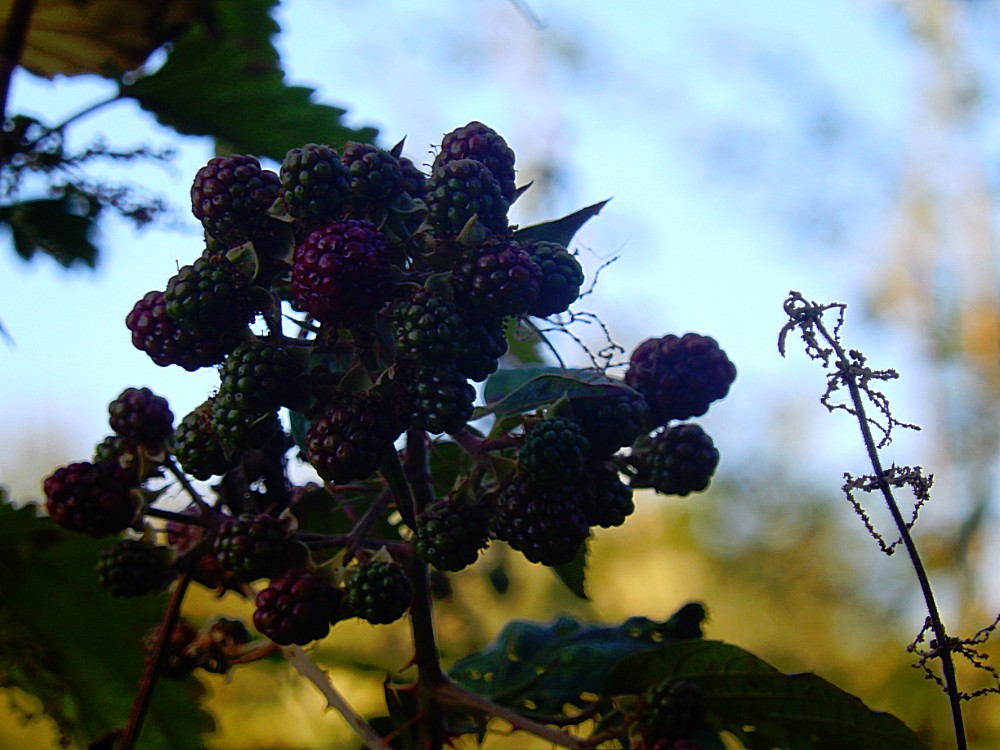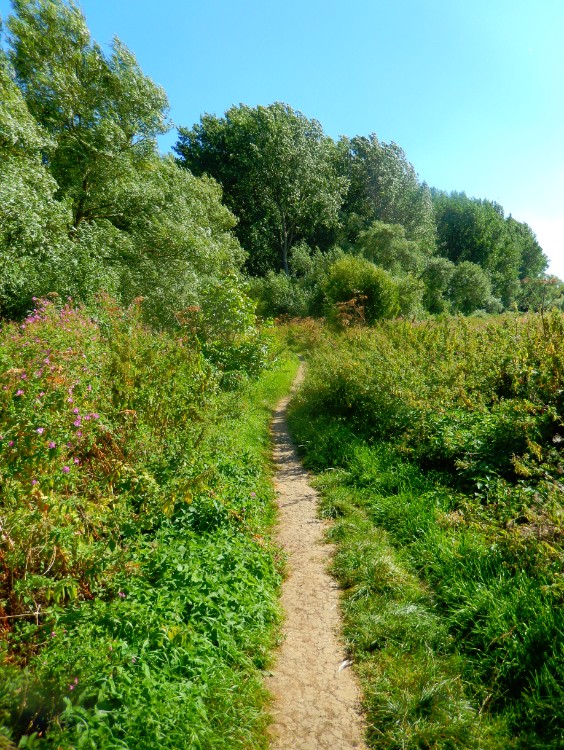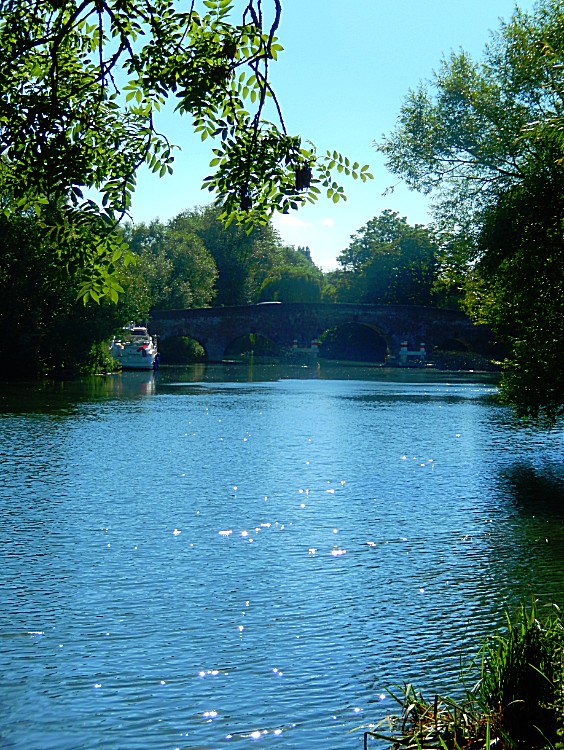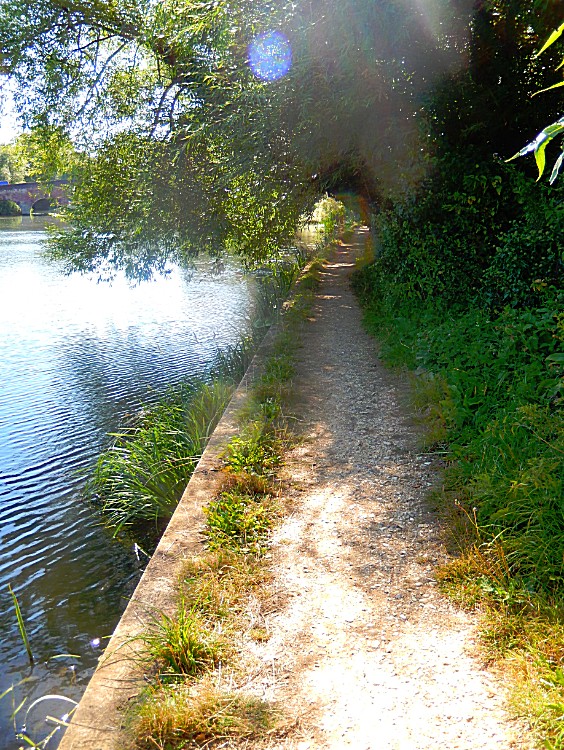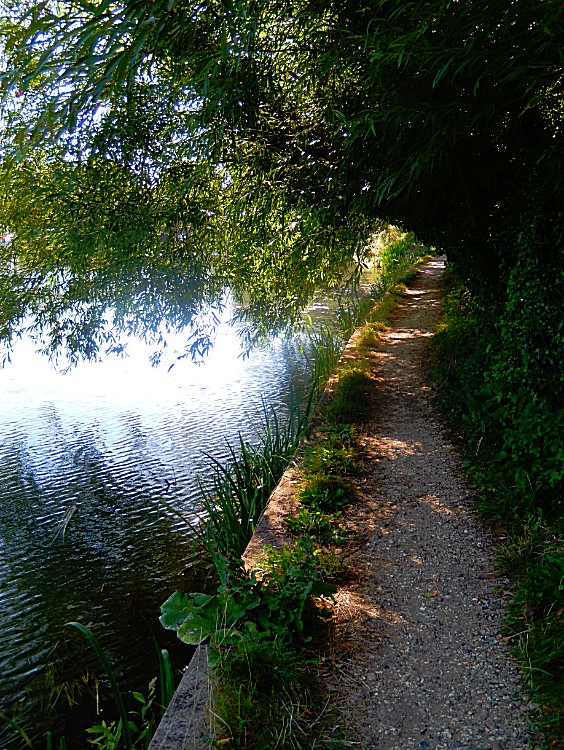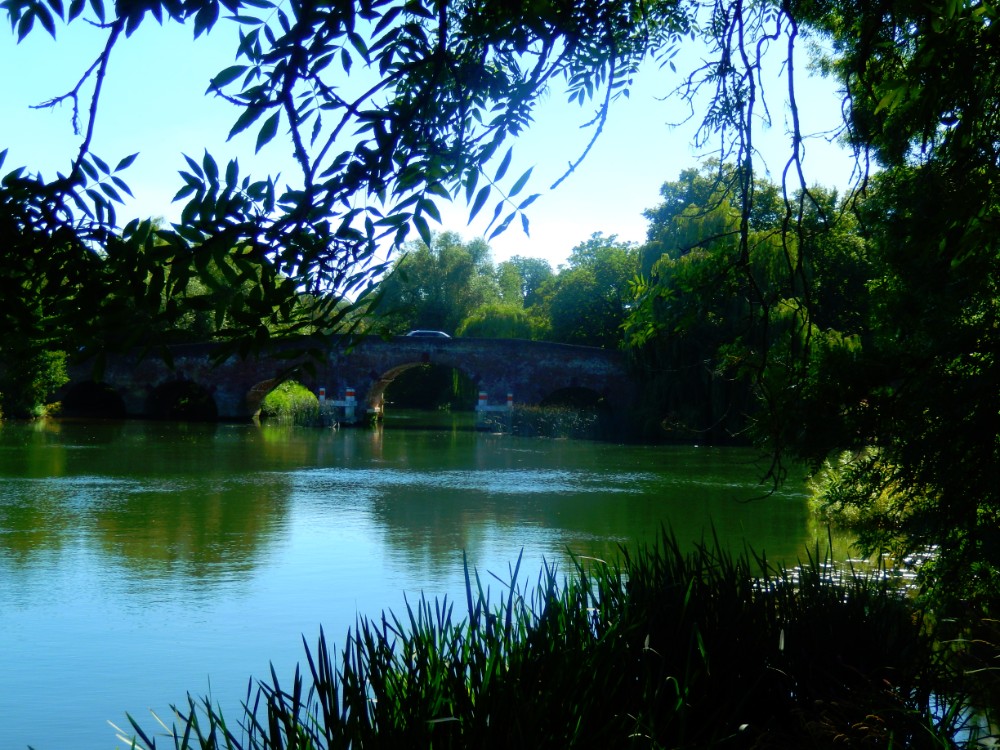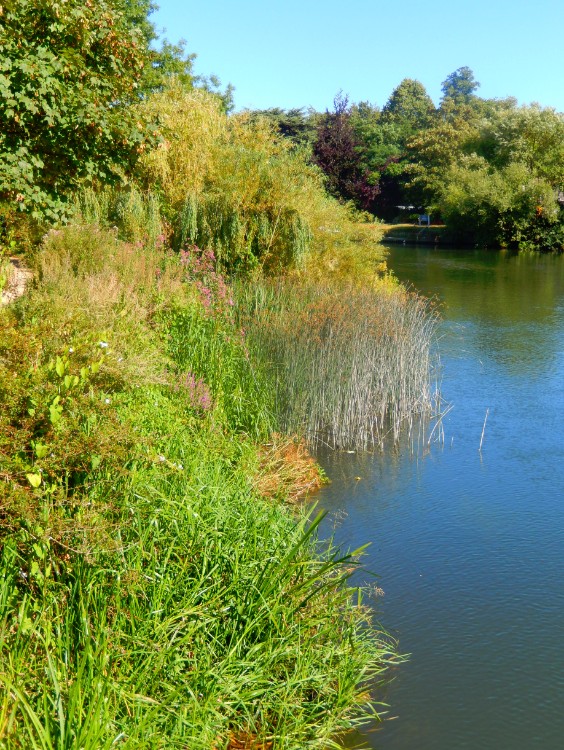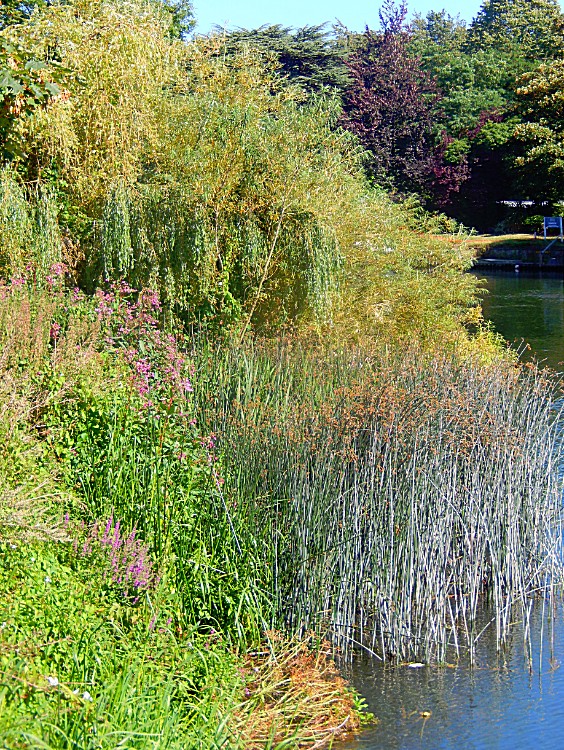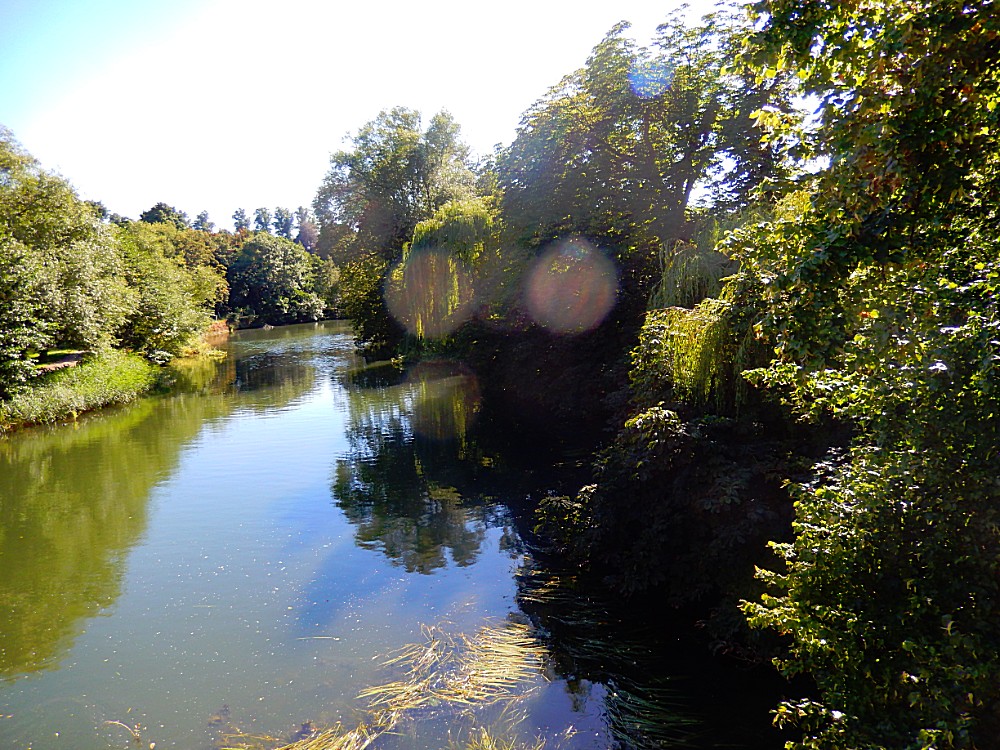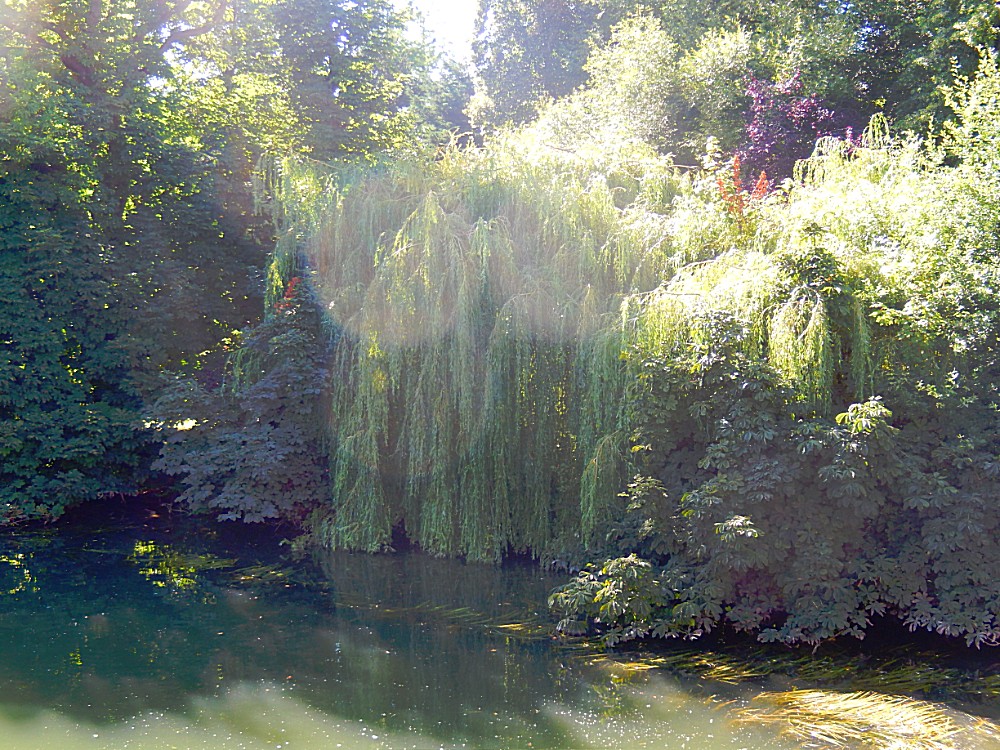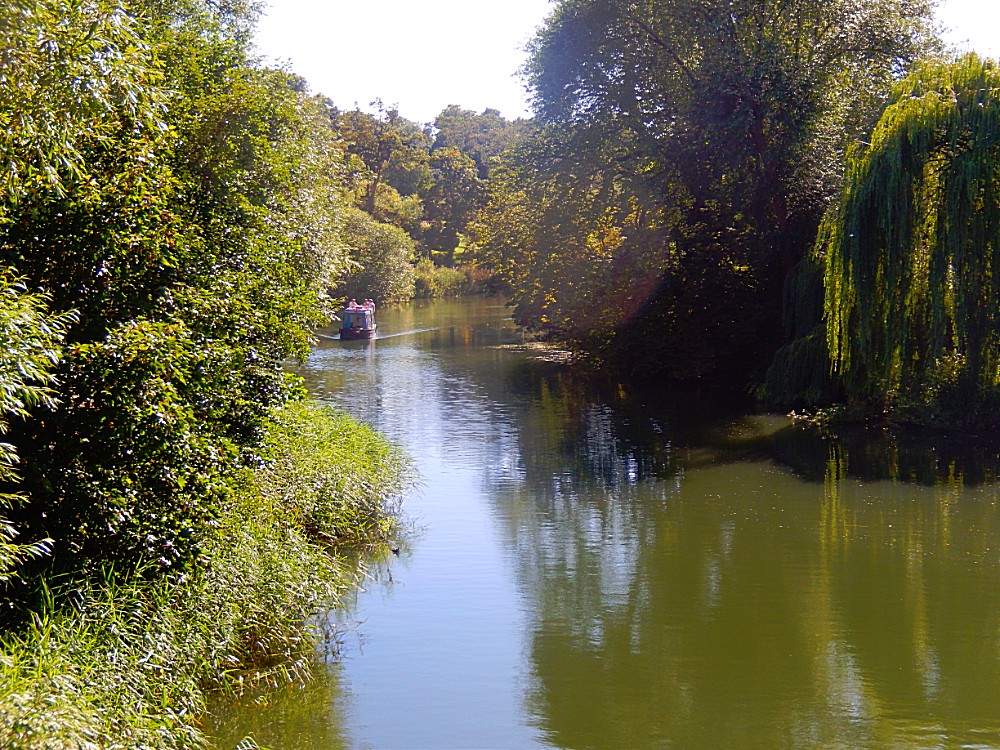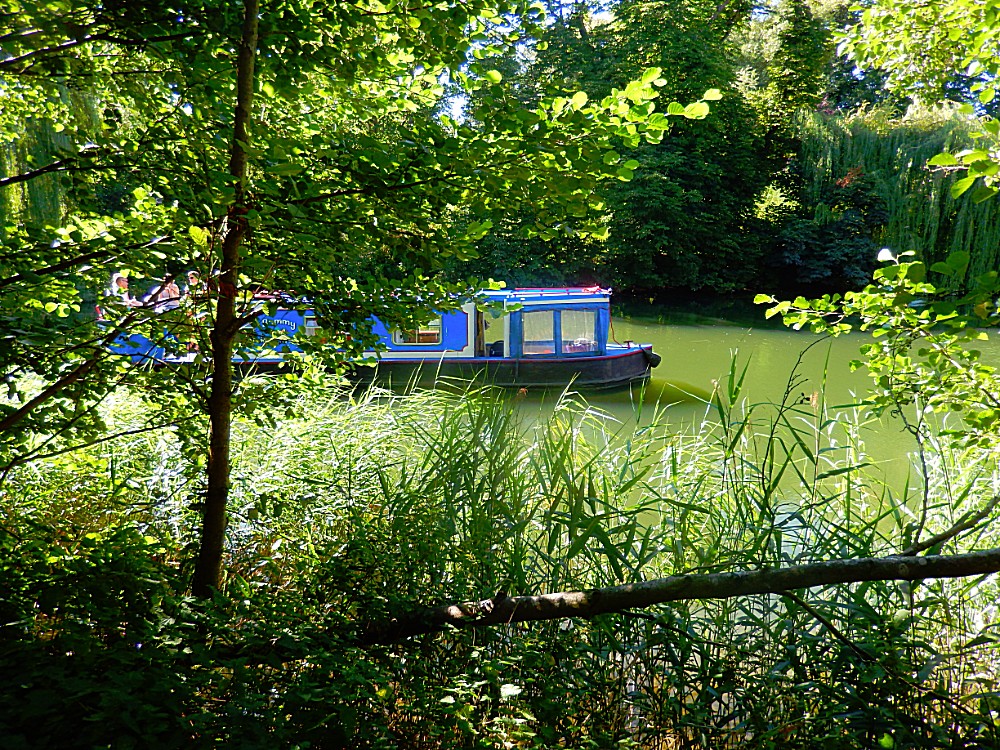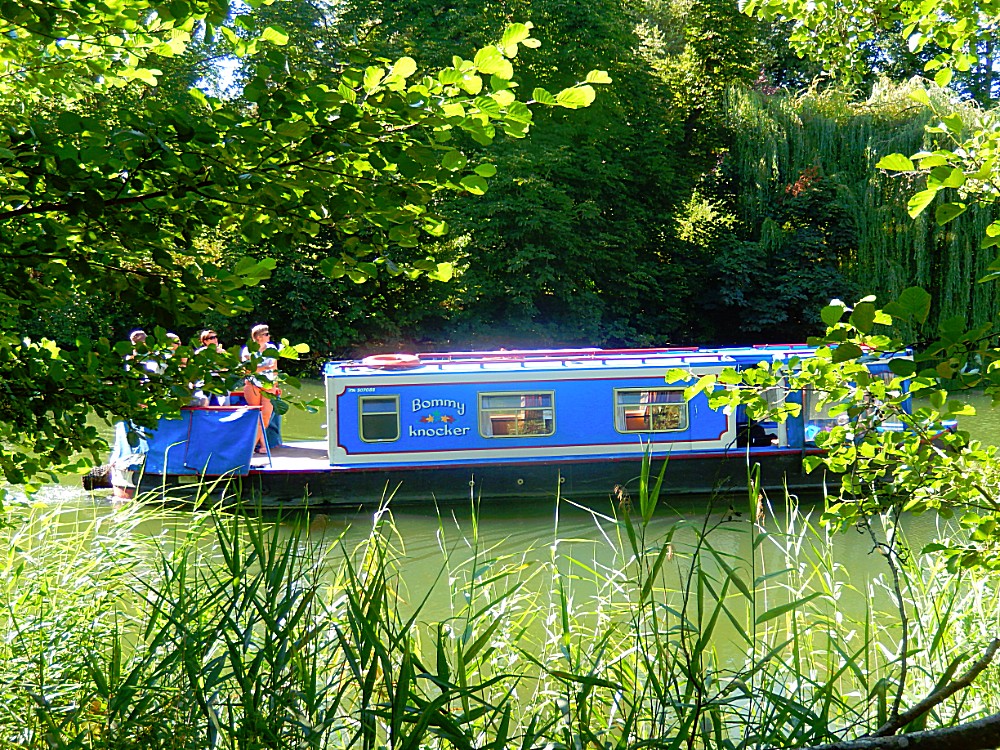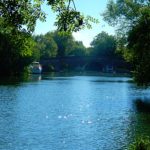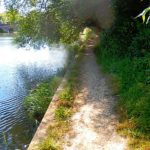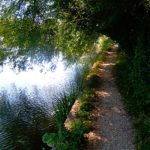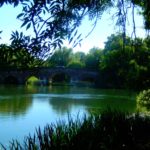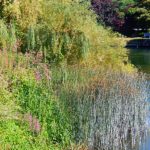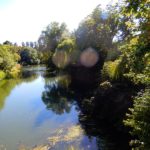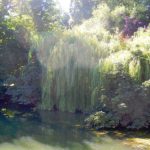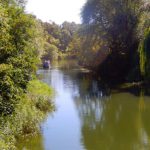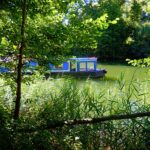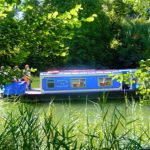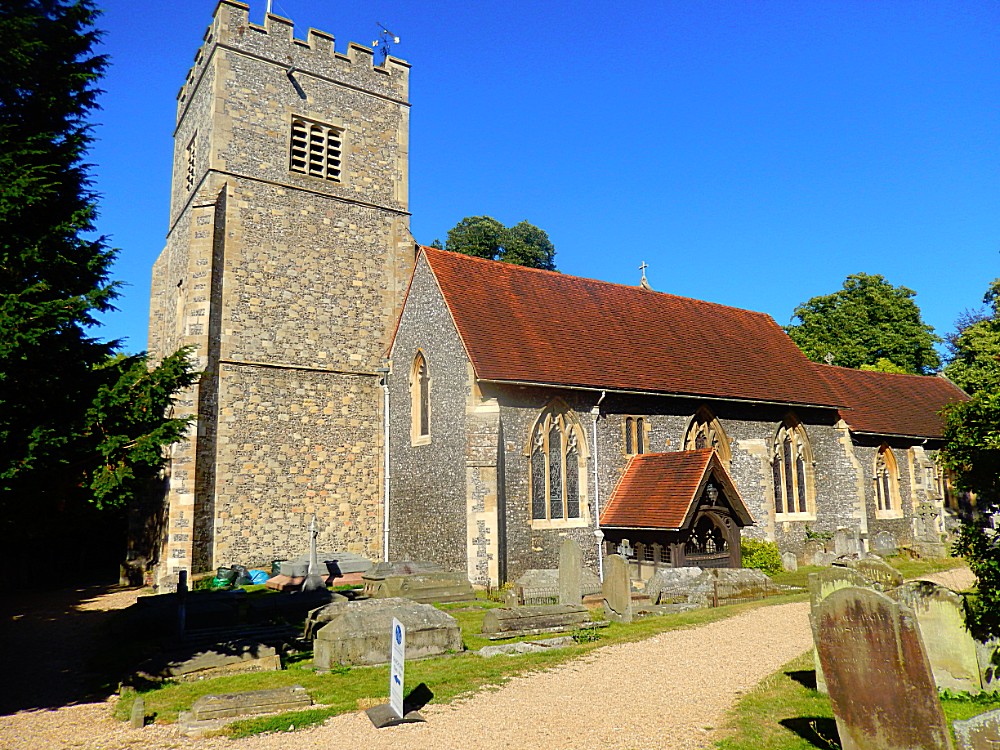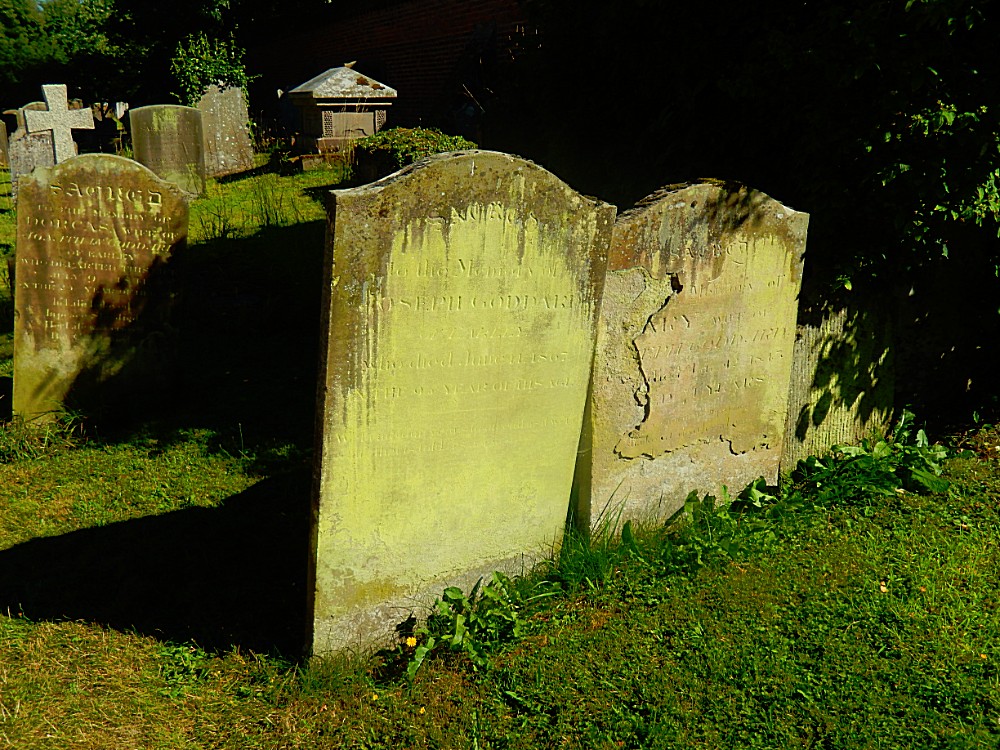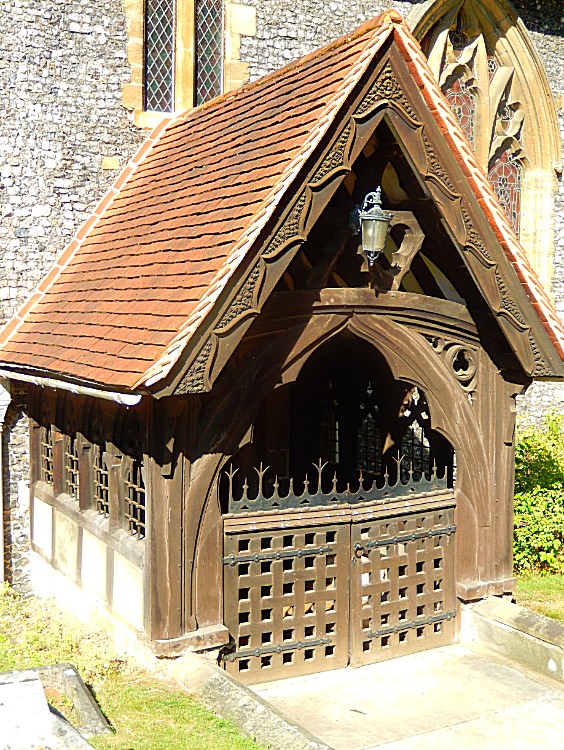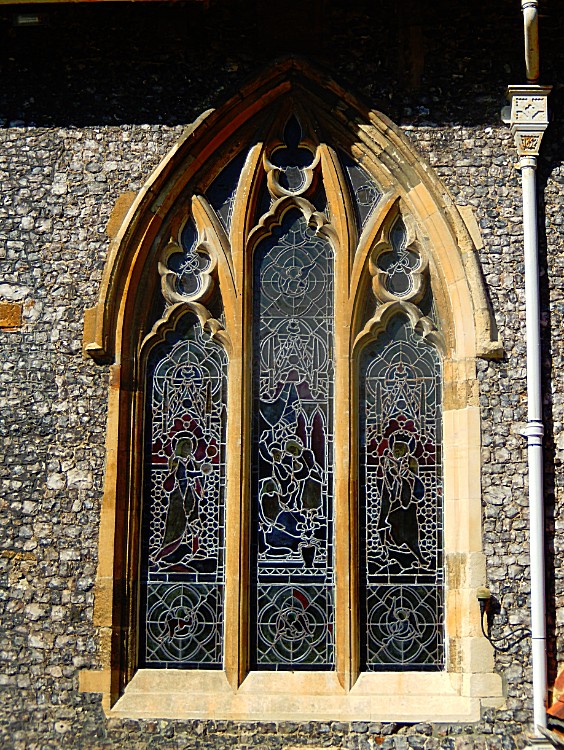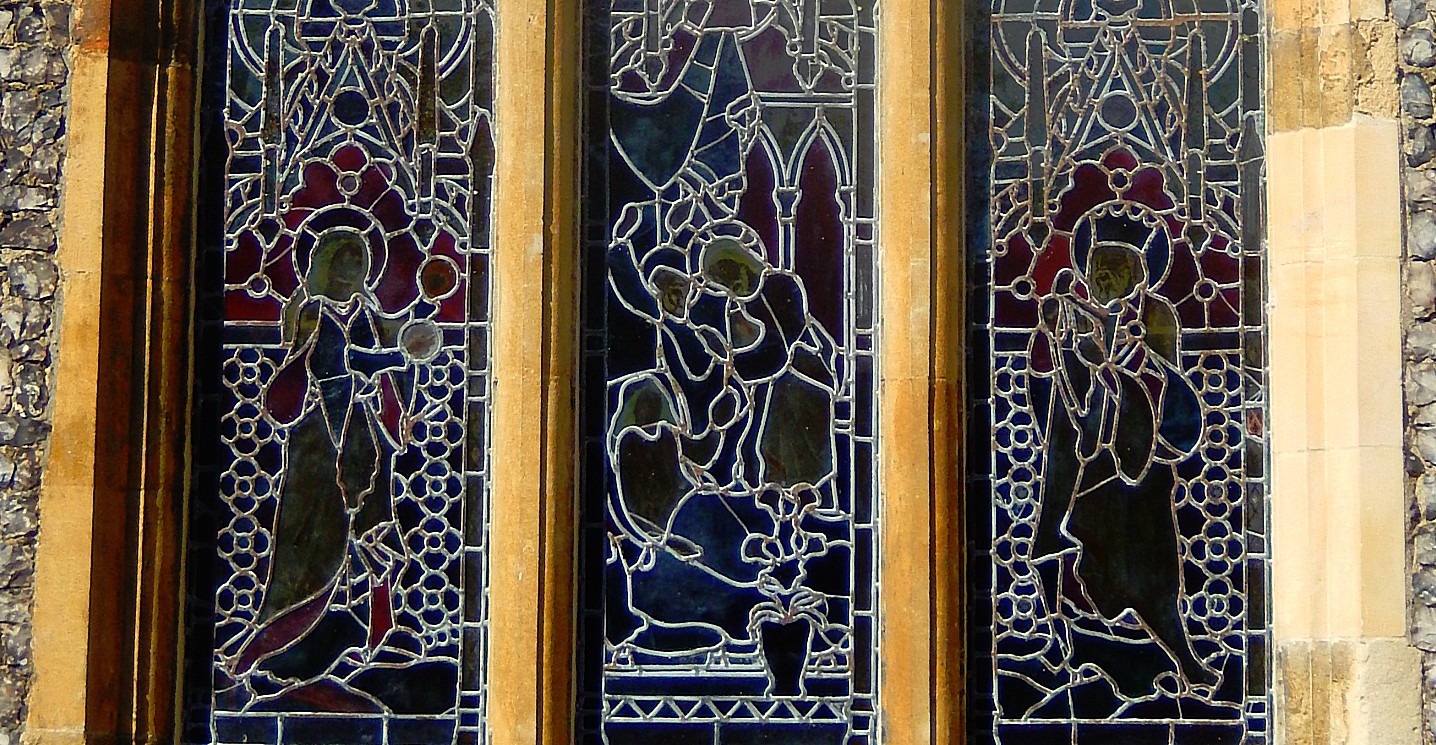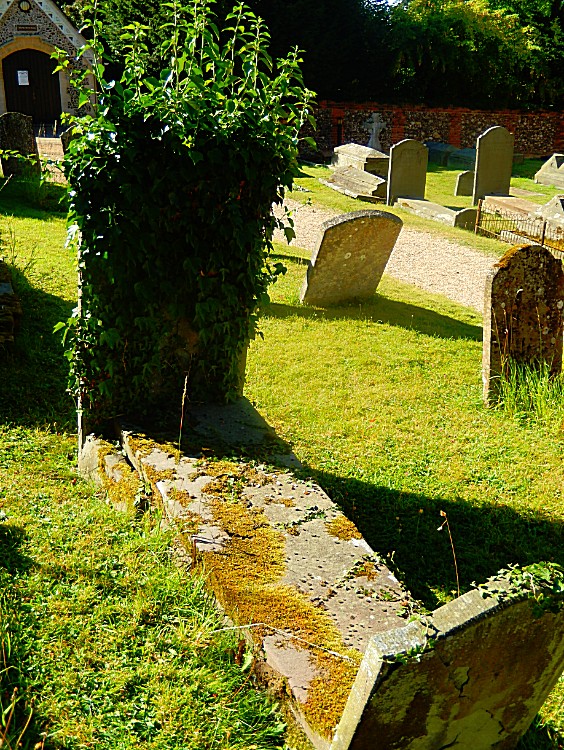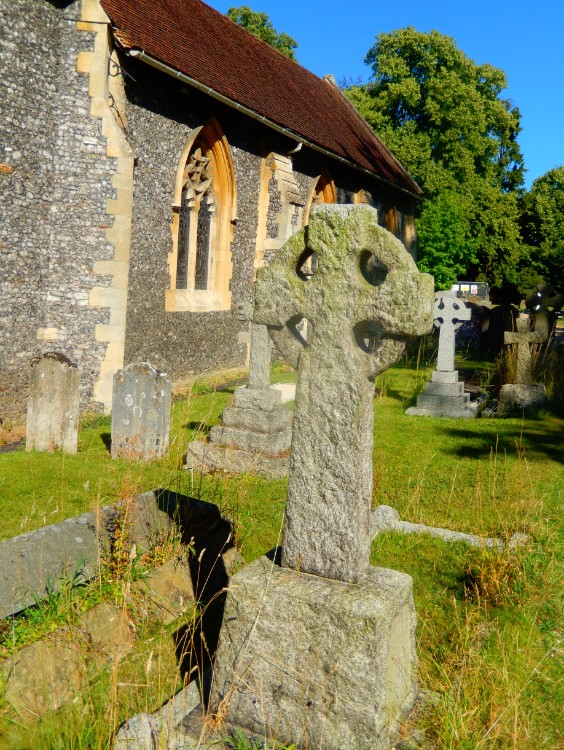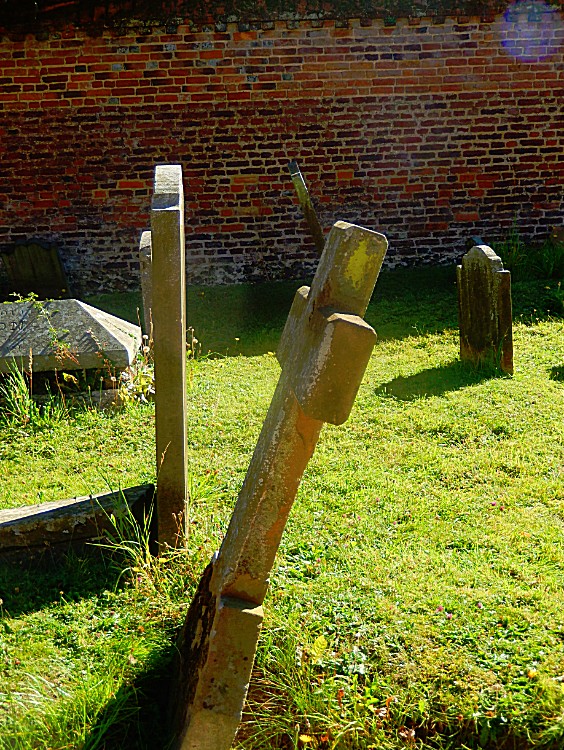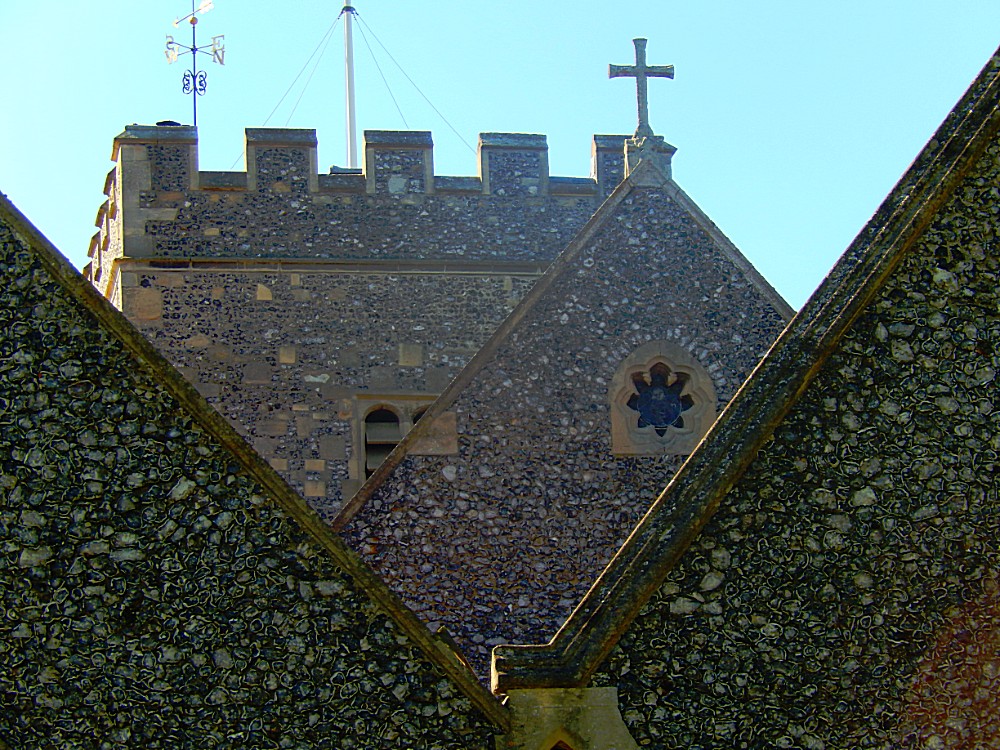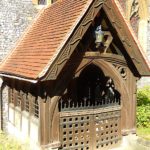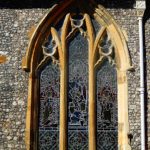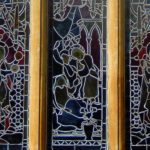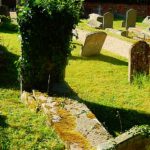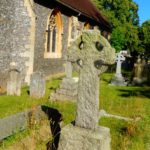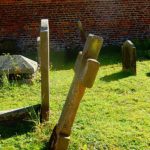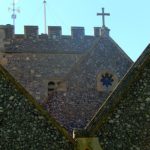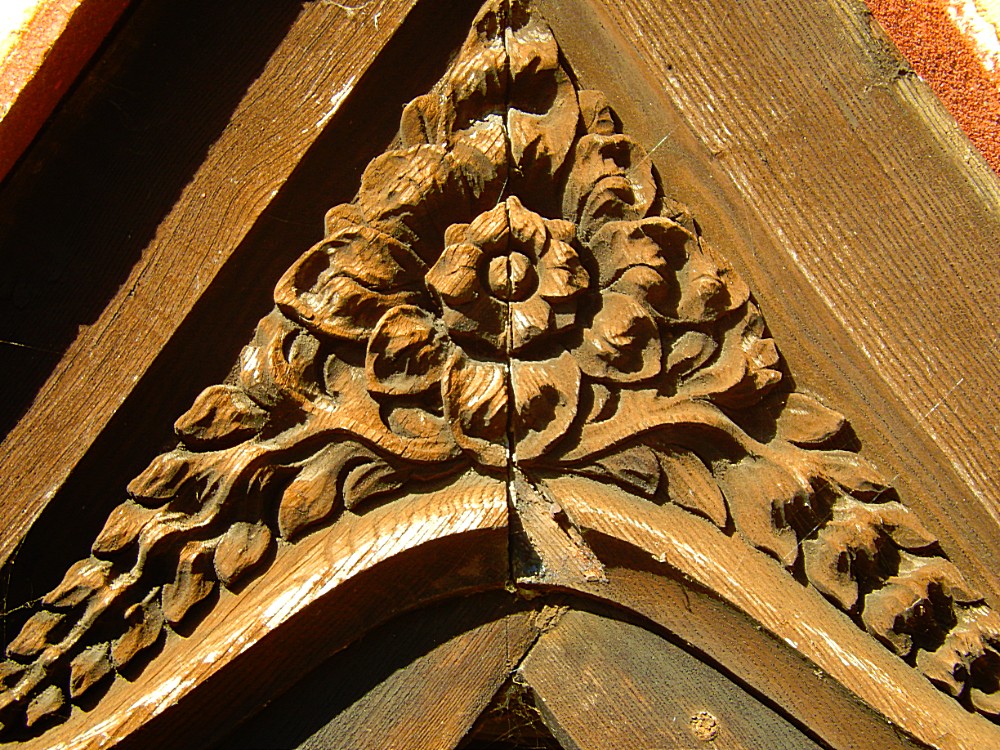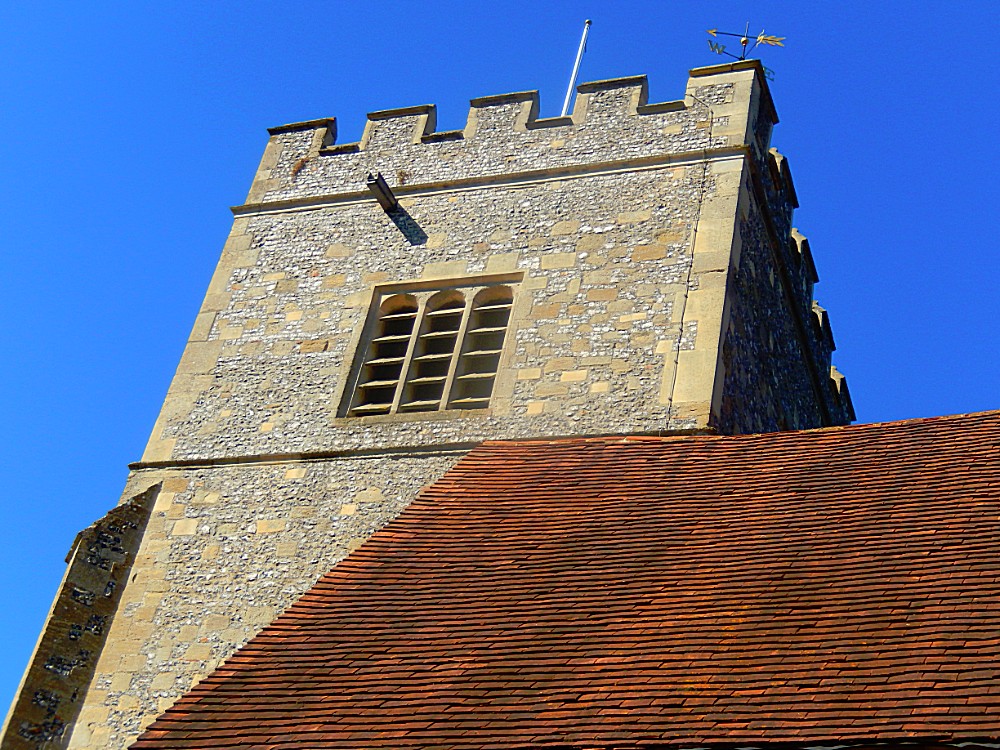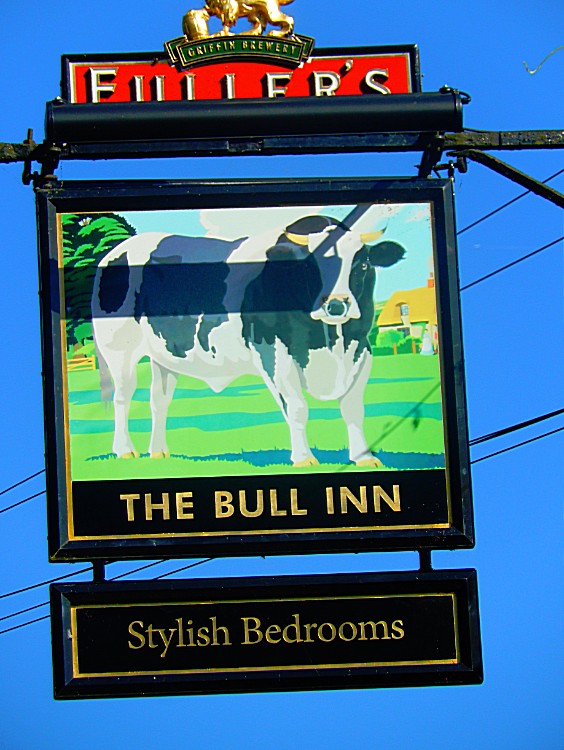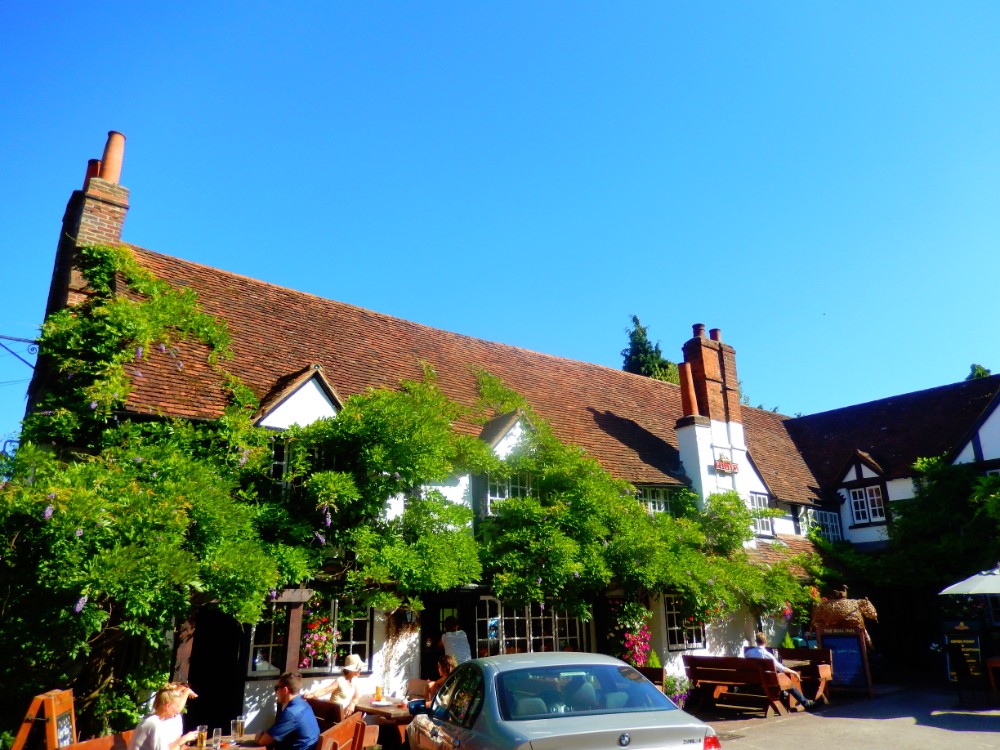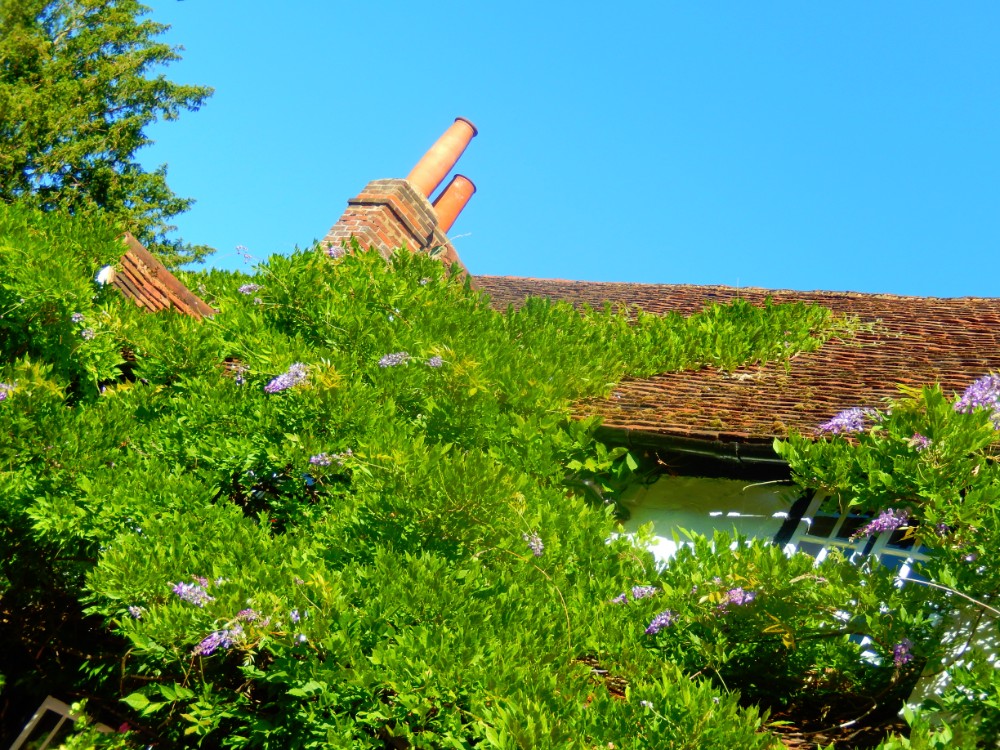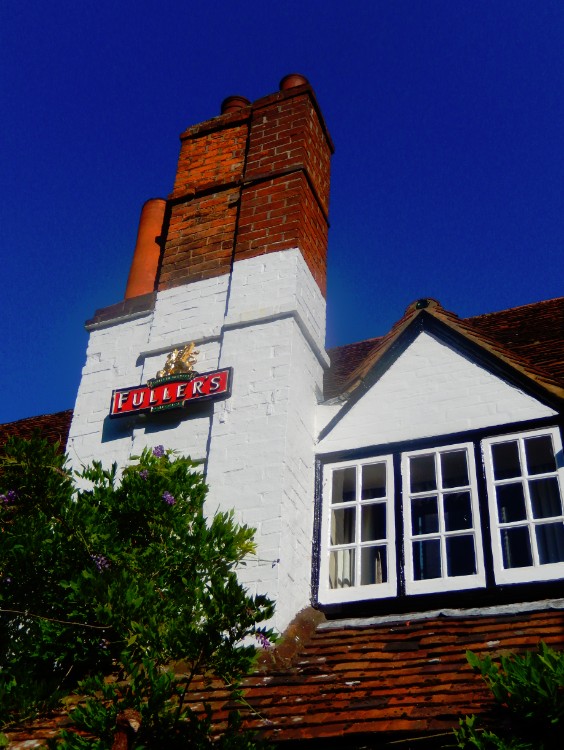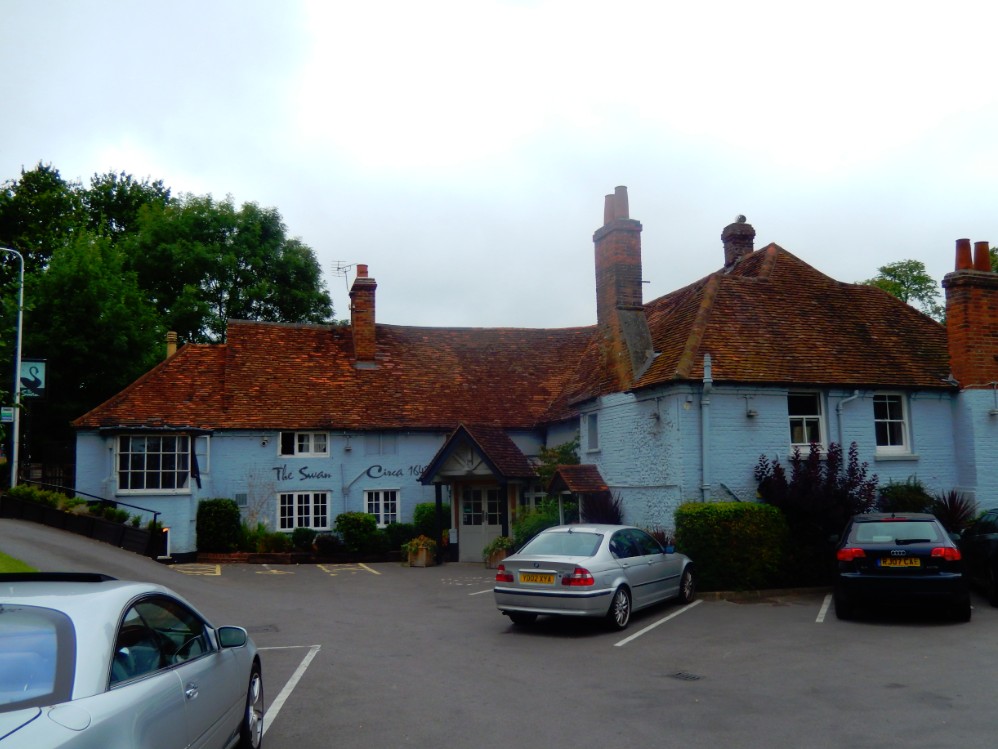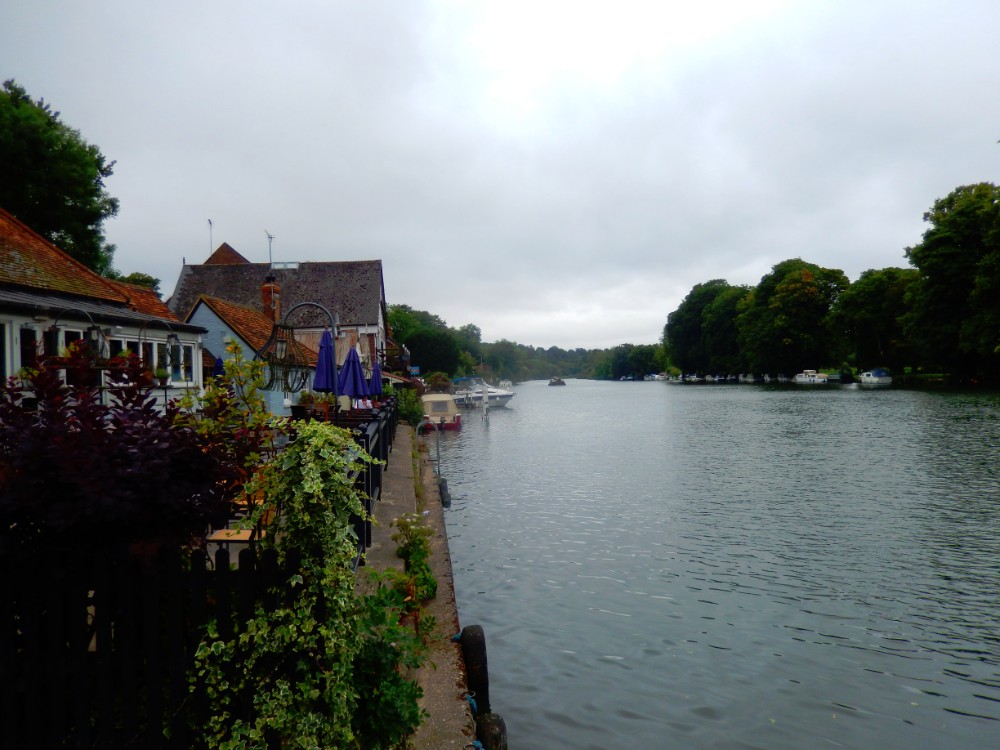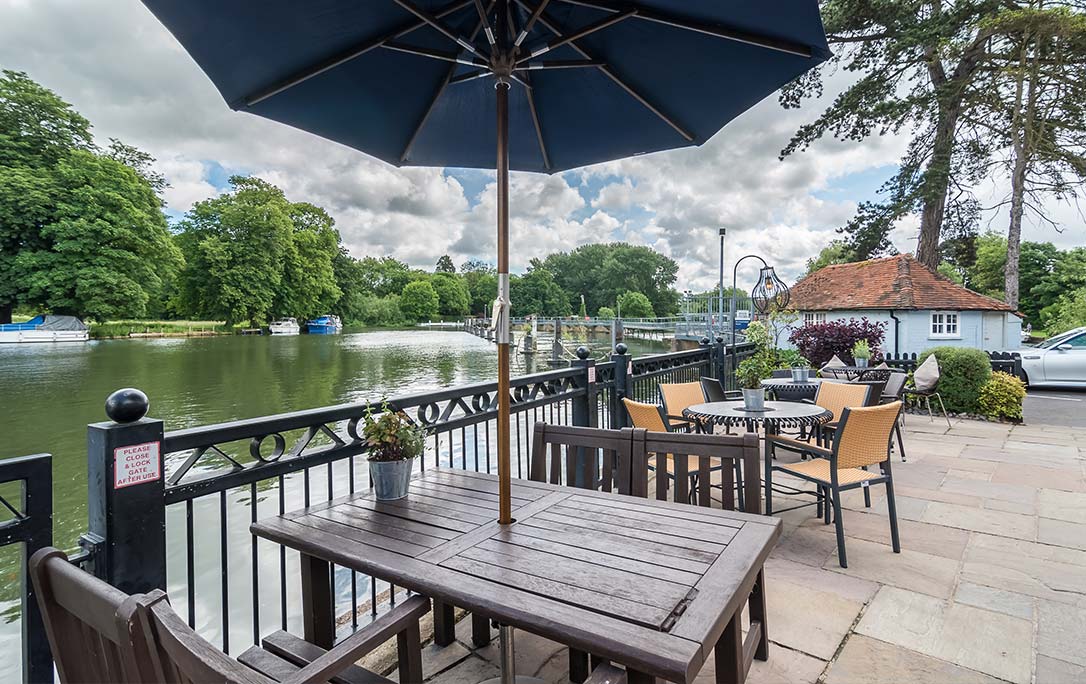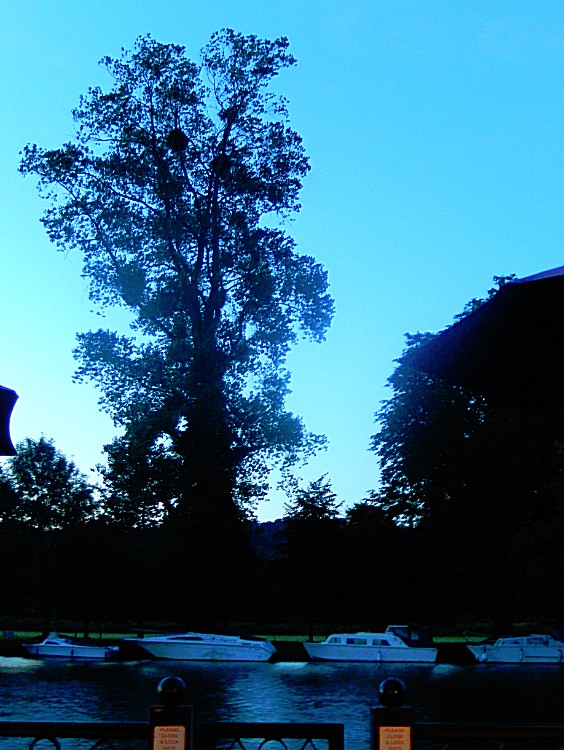Thamespath long distance walk: 2e. From Henley-on-Thames to Pangebourne
There was still a long way to go to Pangebourne and he had spent way to much time at the museum.
The Thamespath now continued eastward following the Thames river past beautiful houses, boats on the river and a huge diversity of trees that made it almost like a Park environment, towards Marsh Lock…
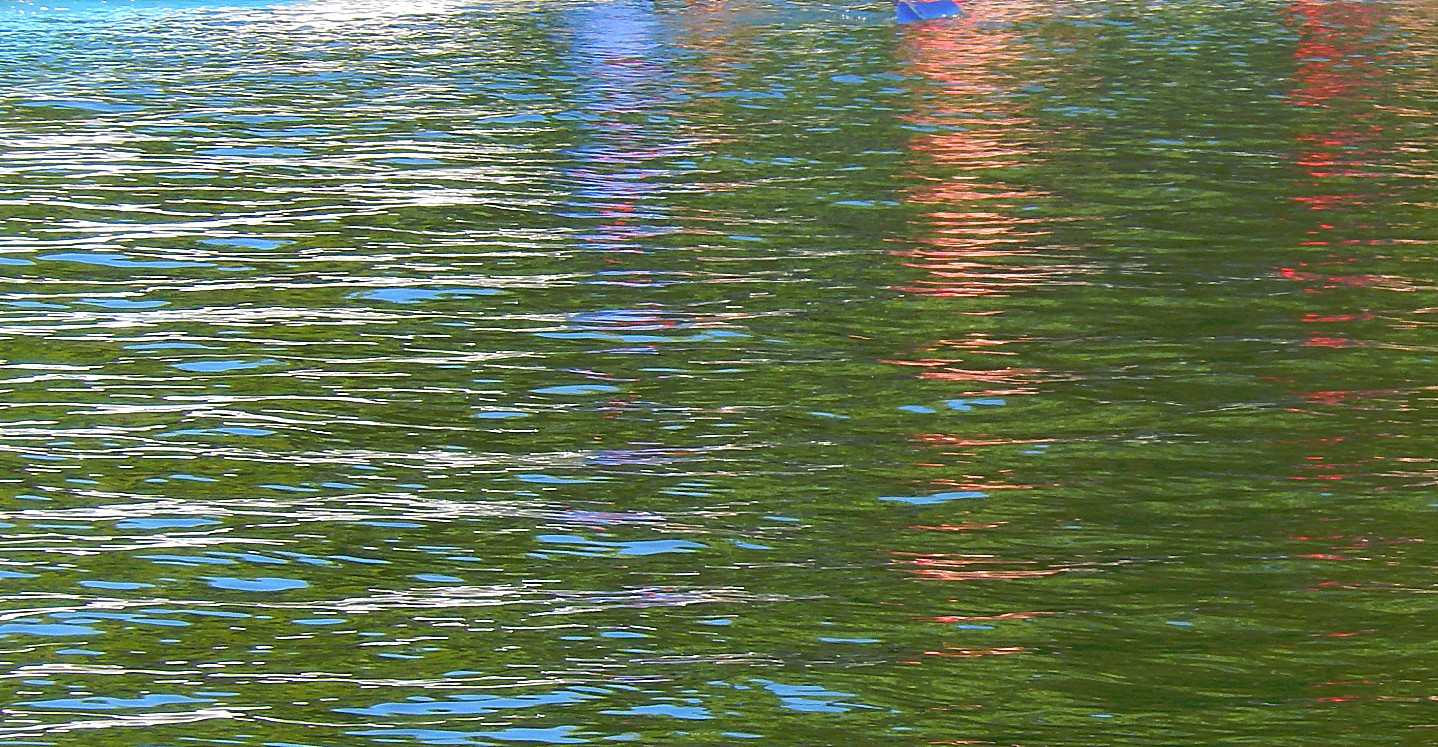 Then a wooden bridge led to Marsh Lock and the Weirs…
Then a wooden bridge led to Marsh Lock and the Weirs…
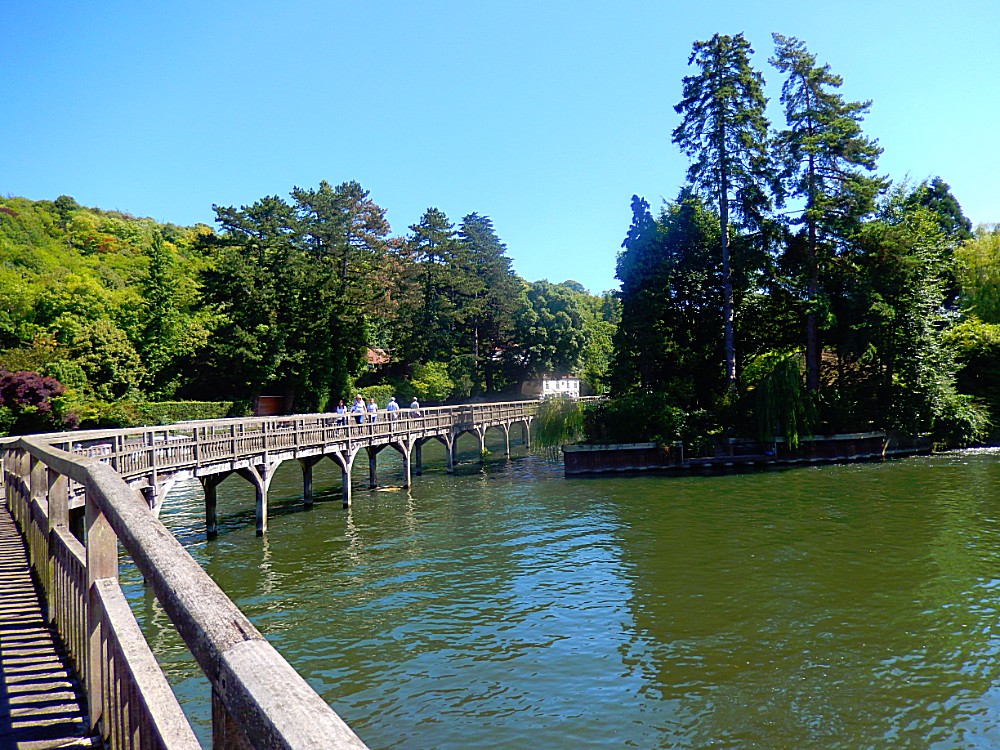 De Marsh Weir Fish Ladder’s main purpose is that of a passage way for Fish up and down the river and passed the Lock…
De Marsh Weir Fish Ladder’s main purpose is that of a passage way for Fish up and down the river and passed the Lock…
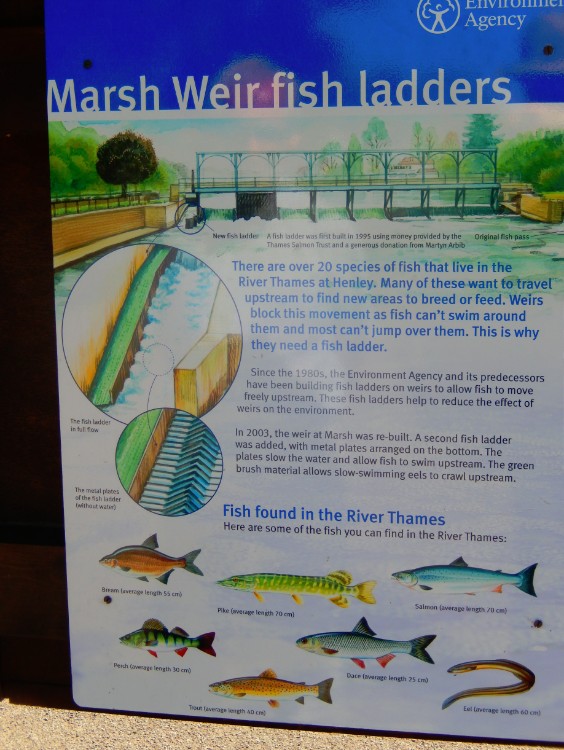
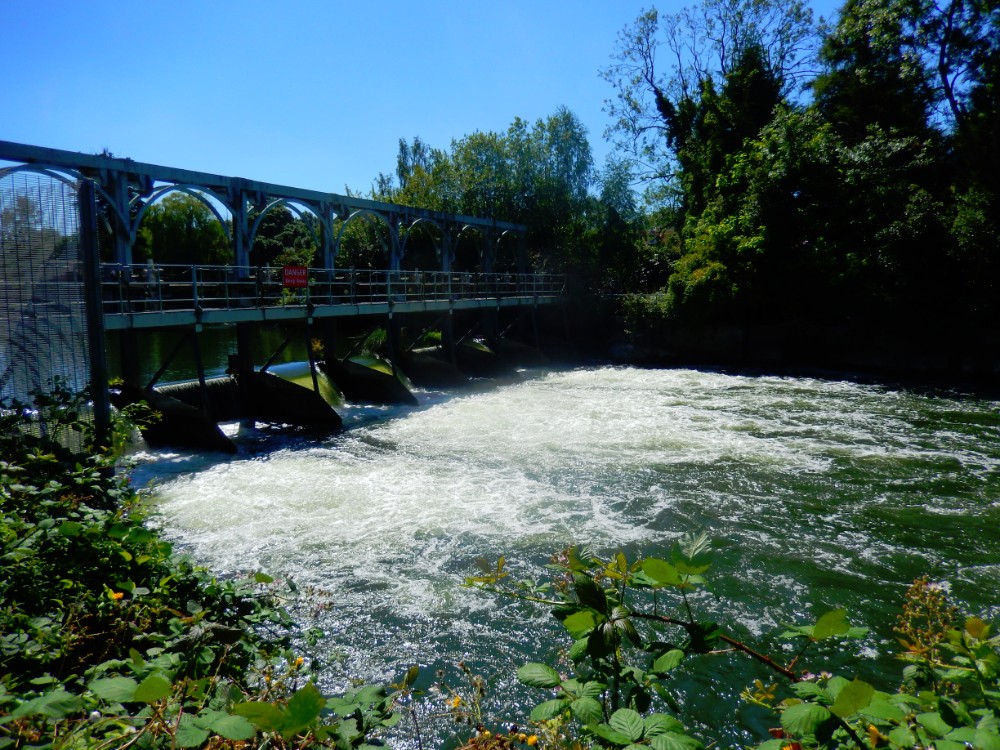 Then the path reached the Marsh Lock where many boats were waiting to pass…
Then the path reached the Marsh Lock where many boats were waiting to pass…
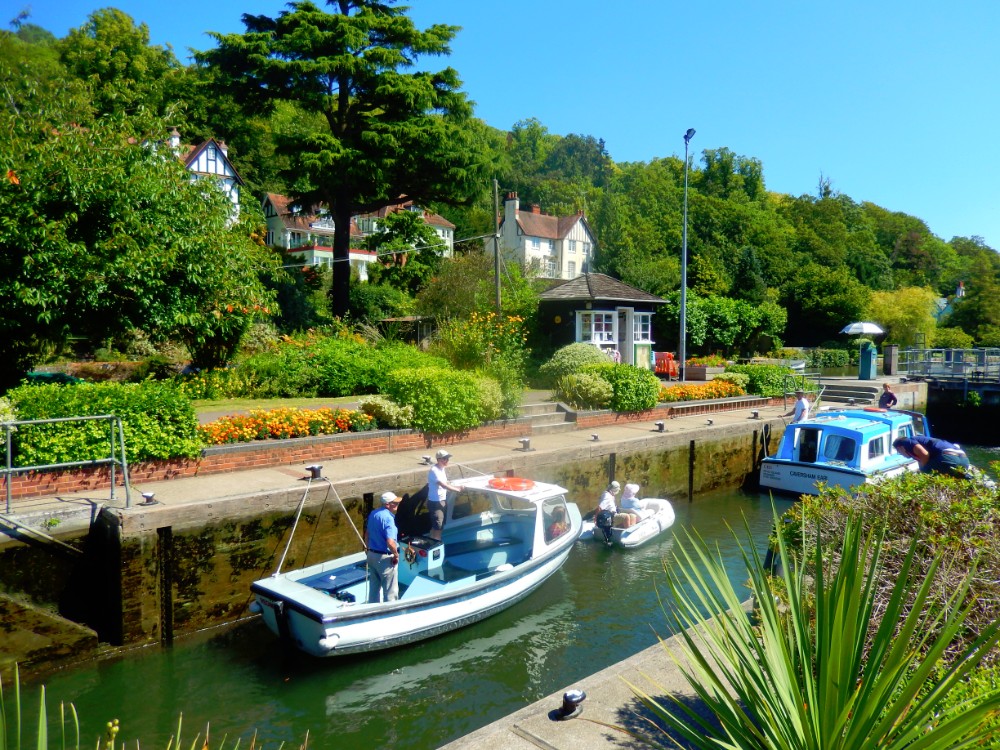 A bit further the path followed another bridge back to the river bank whence the path came from in the first place and then it followed the river again to a bend. Lots of boats on the river brought a colored palette in the bright sunlight…
A bit further the path followed another bridge back to the river bank whence the path came from in the first place and then it followed the river again to a bend. Lots of boats on the river brought a colored palette in the bright sunlight…
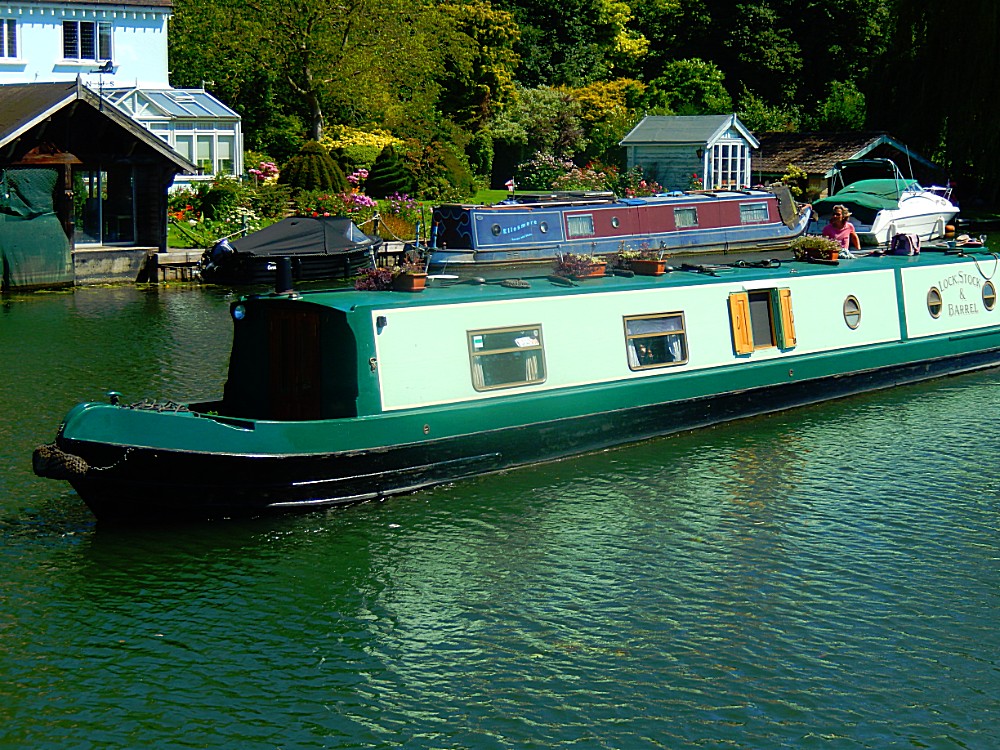
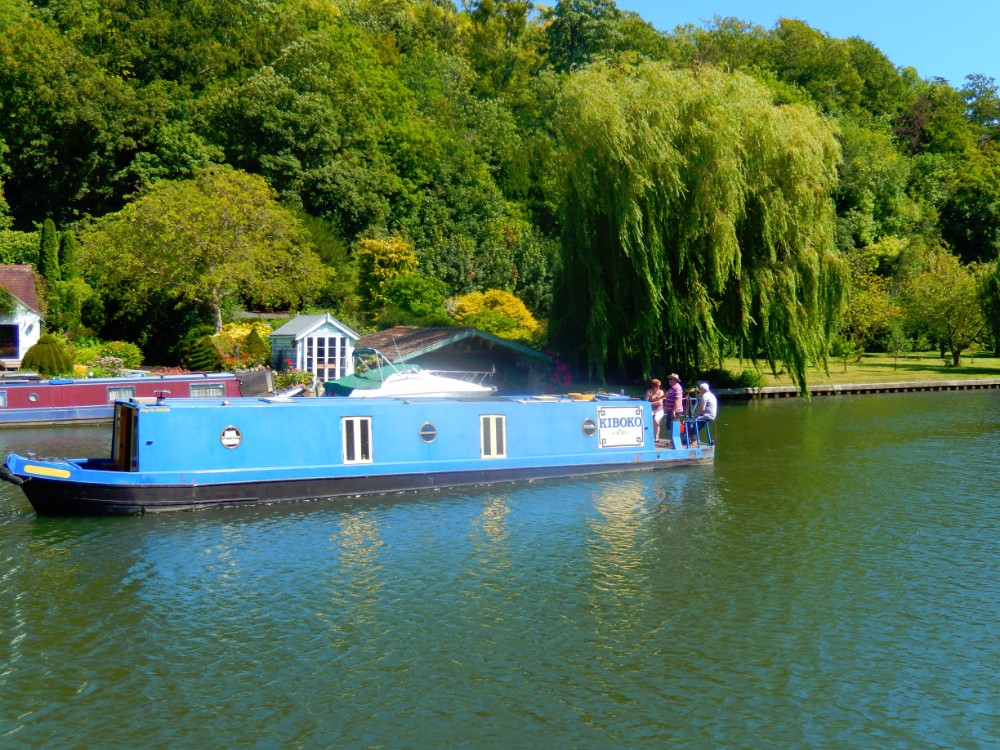
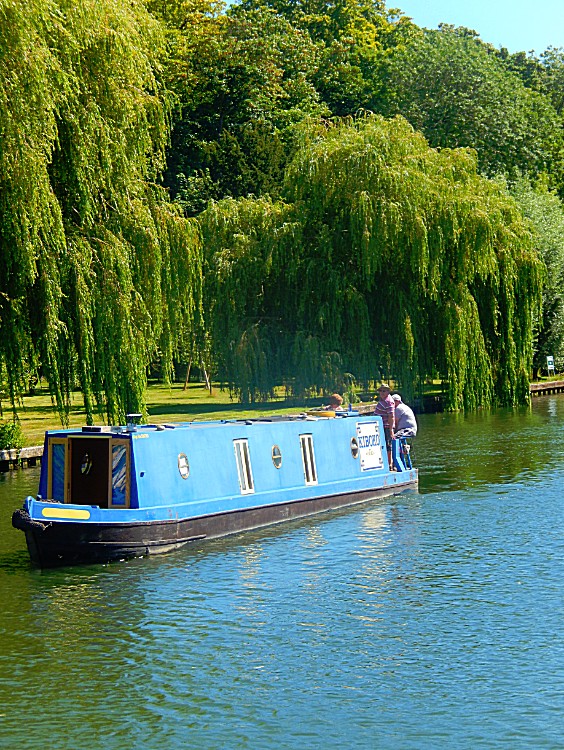 Then the path suddenly leaves the river passing through the meadows of Bolney Court towards the village of Lower Shiplake…
Then the path suddenly leaves the river passing through the meadows of Bolney Court towards the village of Lower Shiplake…
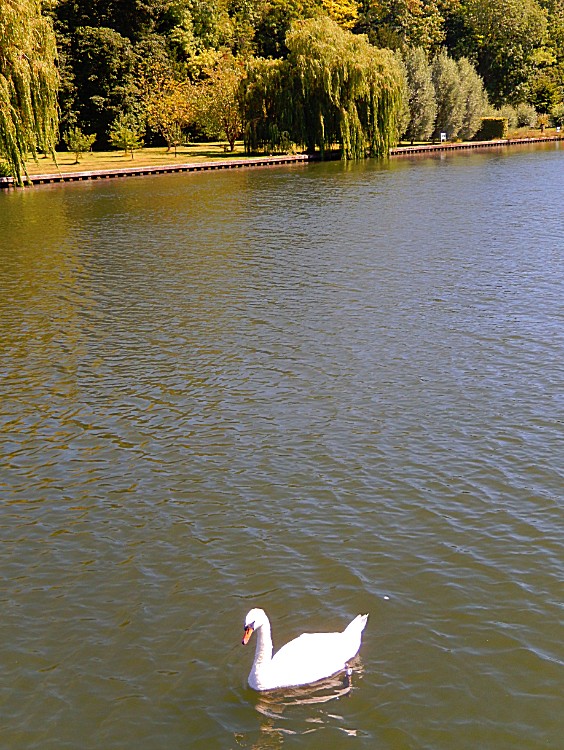
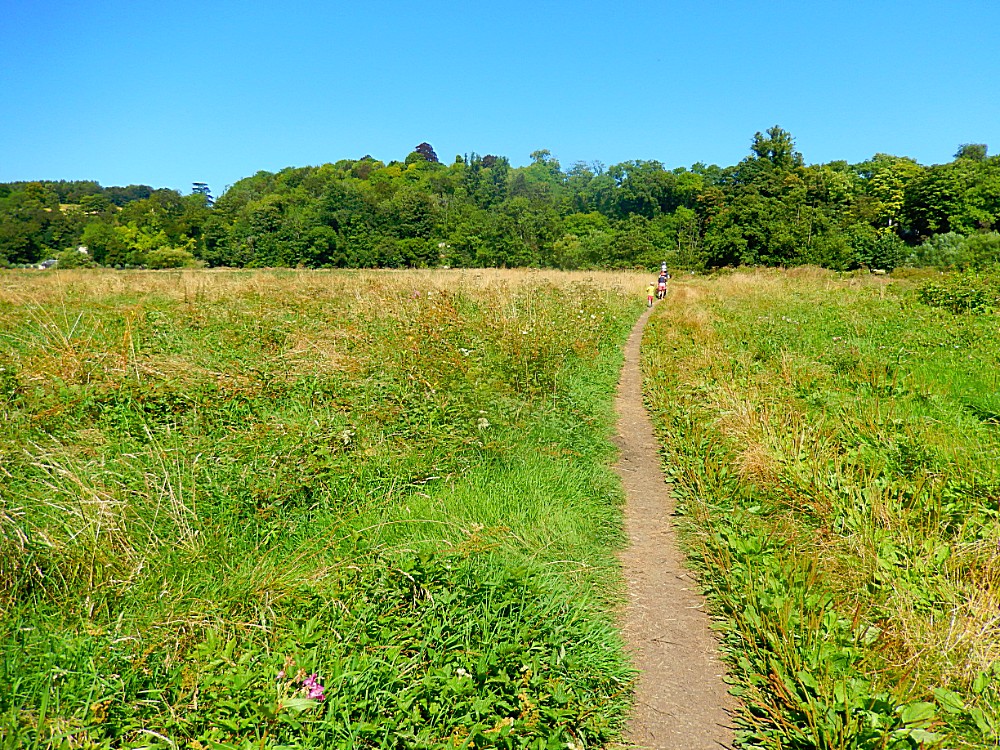
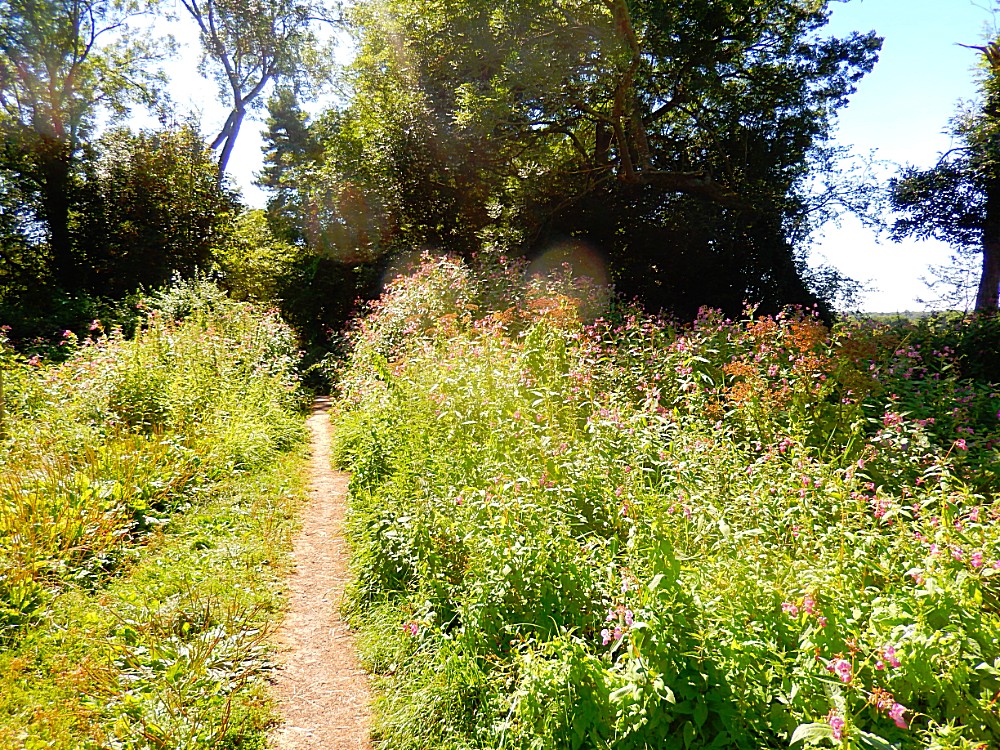
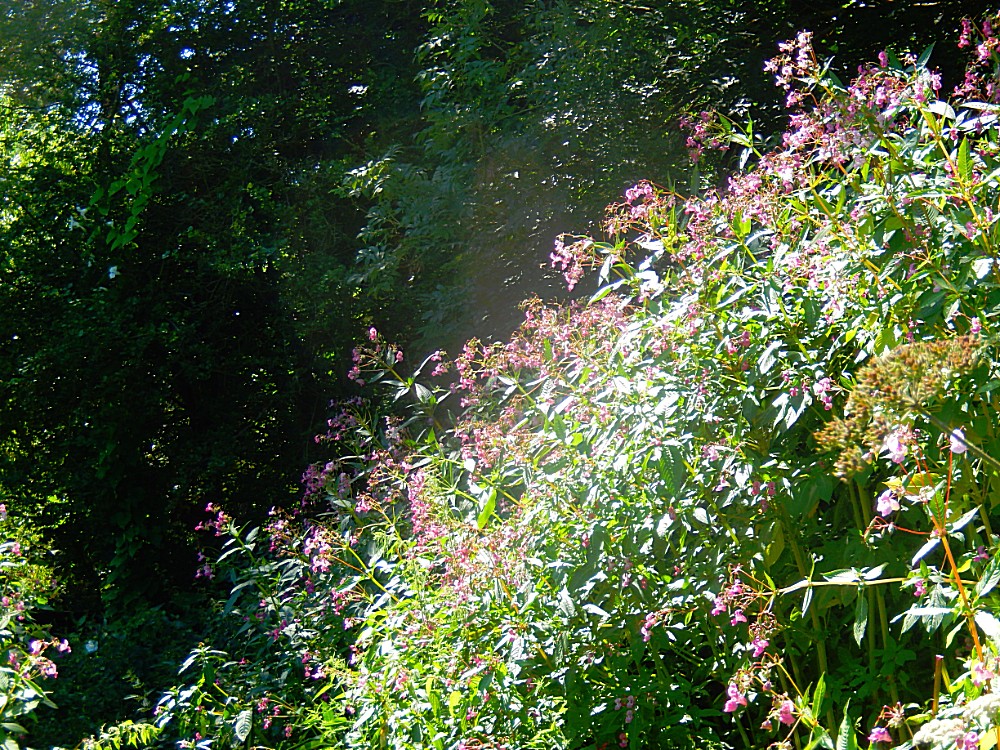

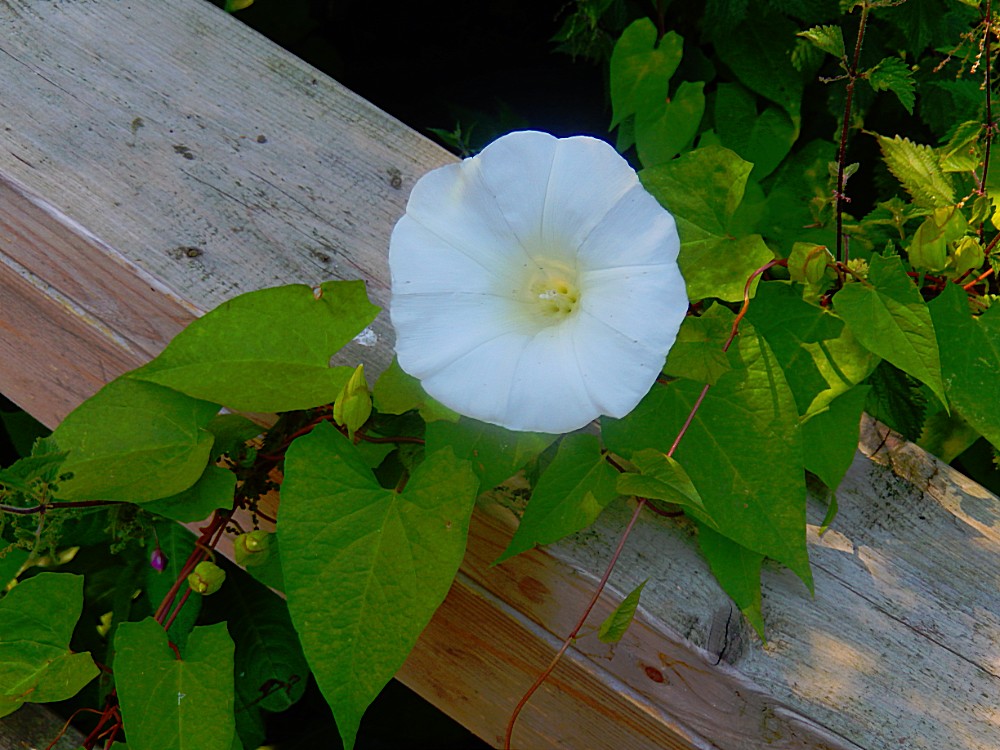
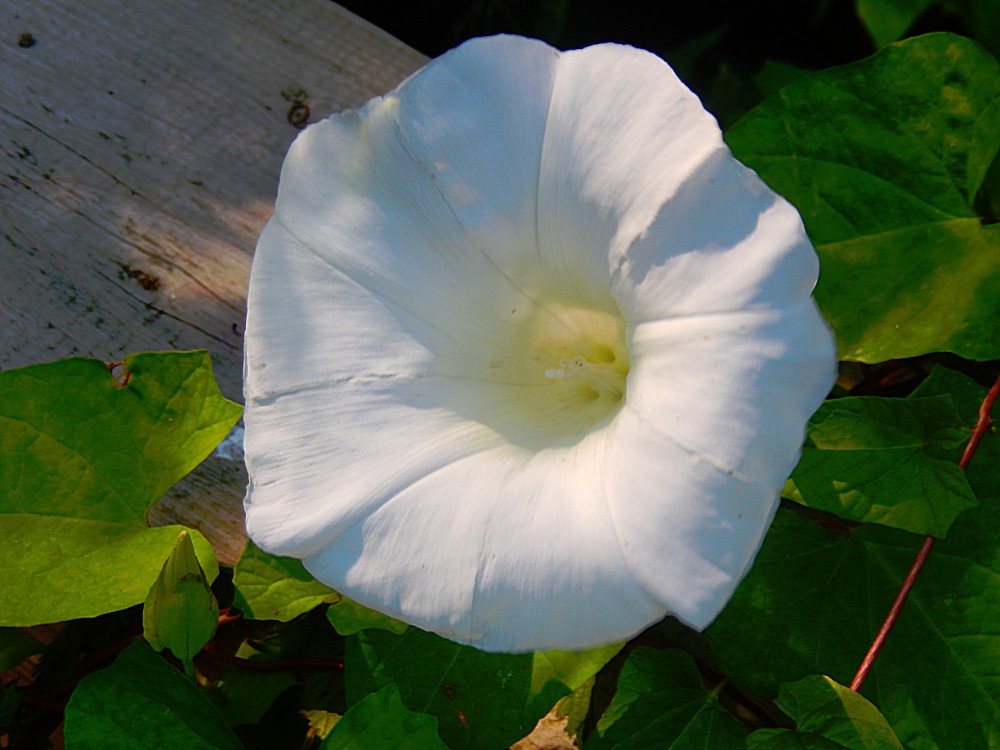
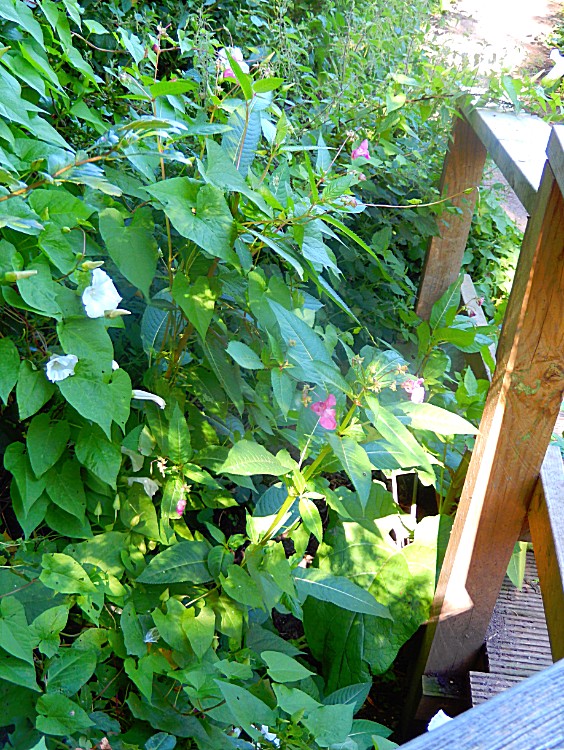 In Lower Shiplake the houses are quite beautiful with well kept gardens around them, making it a very green village…
In Lower Shiplake the houses are quite beautiful with well kept gardens around them, making it a very green village…
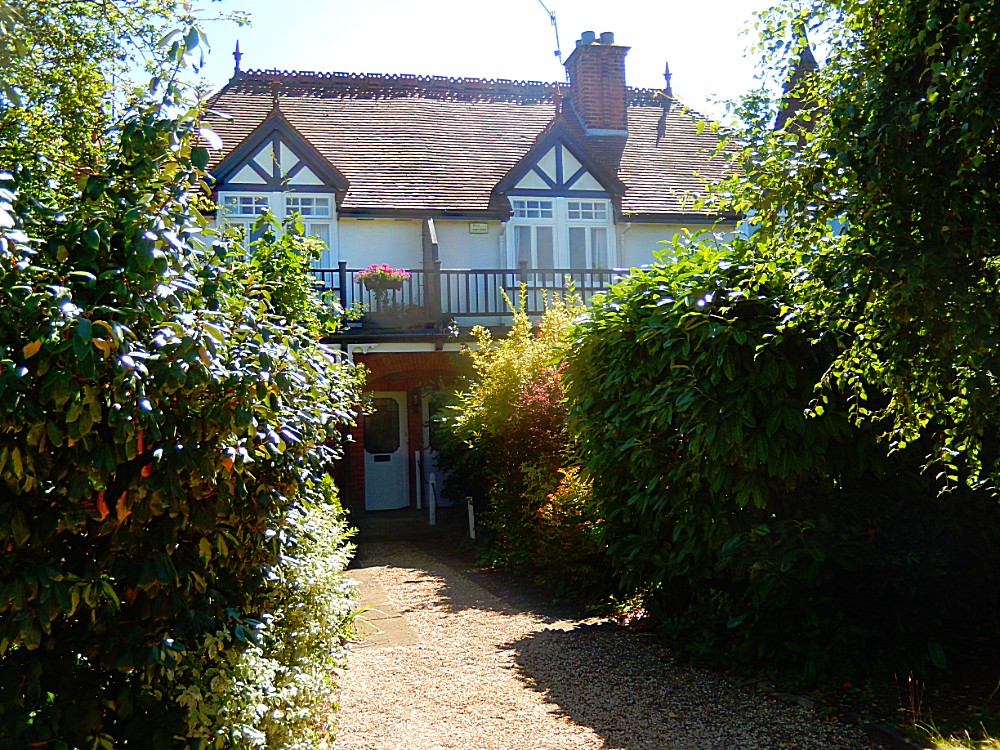
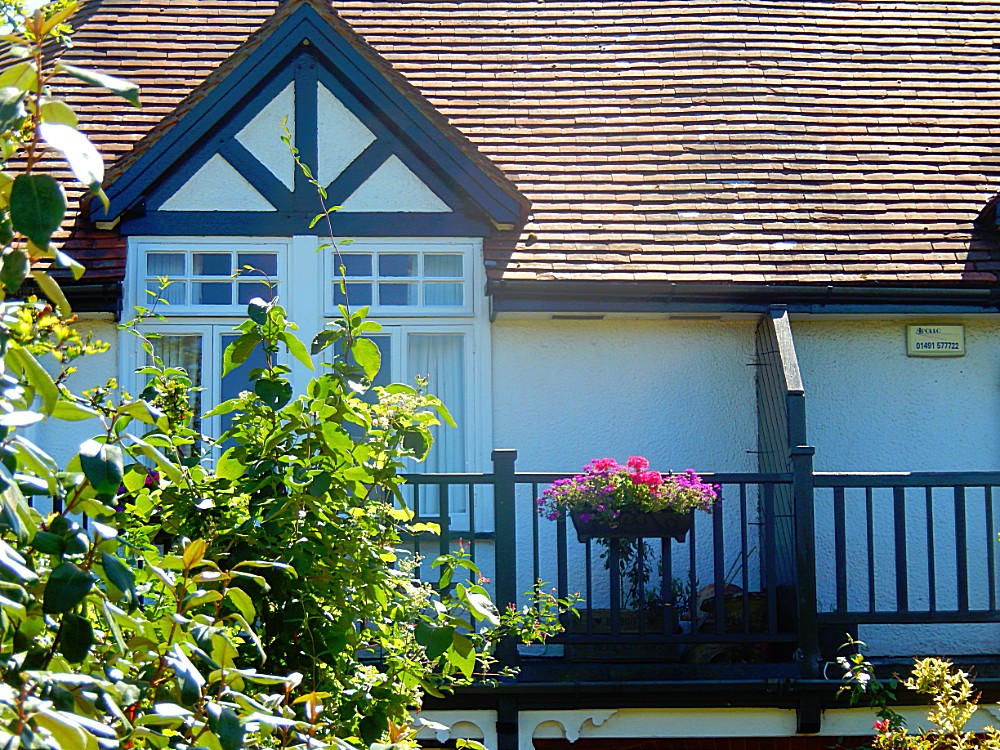 Then The Wandelgek arrived at Shiplake Station and tried to find a shop or a machine selling drinks, but there was none. He crossed the railway and walked on quite thirsty when he saw a pub named the Baskerville Arms. Here he ordered a pint. No not a pint of Guinness. A pint of delicious freshly squeezed orange juice and some ice cubes. Nothing is better than that when you’re hot and thirsty 🙂 (Well maybe melon slices in the desert are better ;-)).
Then The Wandelgek arrived at Shiplake Station and tried to find a shop or a machine selling drinks, but there was none. He crossed the railway and walked on quite thirsty when he saw a pub named the Baskerville Arms. Here he ordered a pint. No not a pint of Guinness. A pint of delicious freshly squeezed orange juice and some ice cubes. Nothing is better than that when you’re hot and thirsty 🙂 (Well maybe melon slices in the desert are better ;-)).

 Then The Wandelgek left the Baskerville Arms and walked on. The Station Road kept moving from the river and he started following Mill Road which went parallel to the river. After some lanes through beautiful Lower Shiplake, and some great photo opportunities, he left LowerShiplake and soon was surrounded by nothing but greenery and after that the river was reached again.
Then The Wandelgek left the Baskerville Arms and walked on. The Station Road kept moving from the river and he started following Mill Road which went parallel to the river. After some lanes through beautiful Lower Shiplake, and some great photo opportunities, he left LowerShiplake and soon was surrounded by nothing but greenery and after that the river was reached again.
…and the river was reached near Shiplake Lock, so again there were lots of ships on the river. Then Shiplake was passed and an old beautiful boathouse owned by one of the trillion rowing societies that were situated in the Thames river region around Henley-on-Thames…
[Foto]
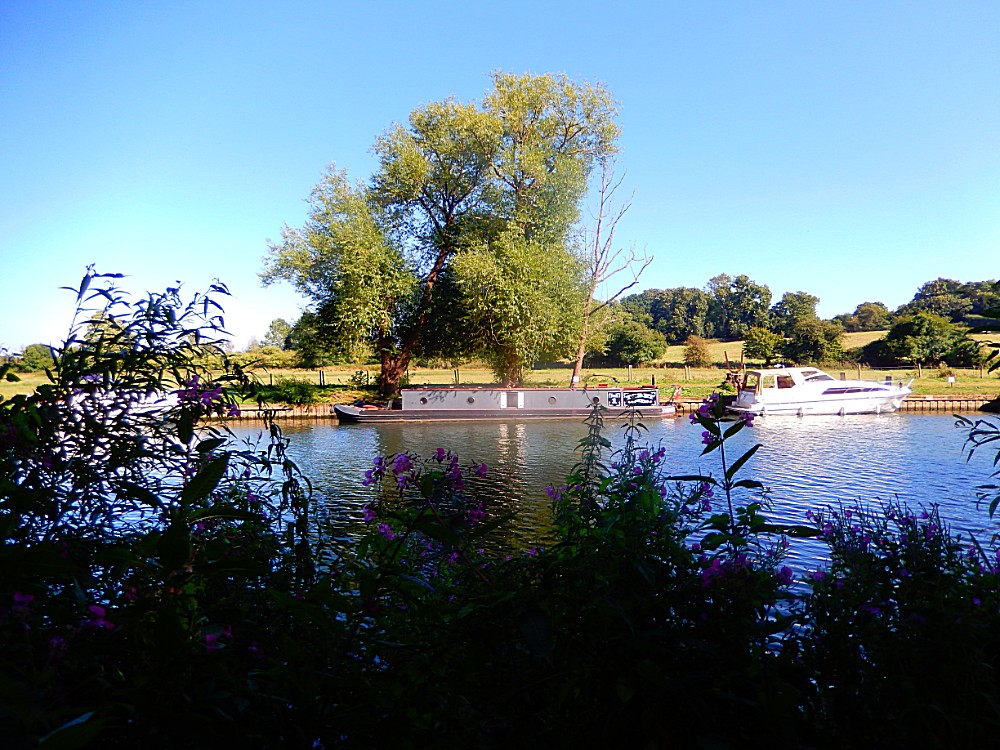
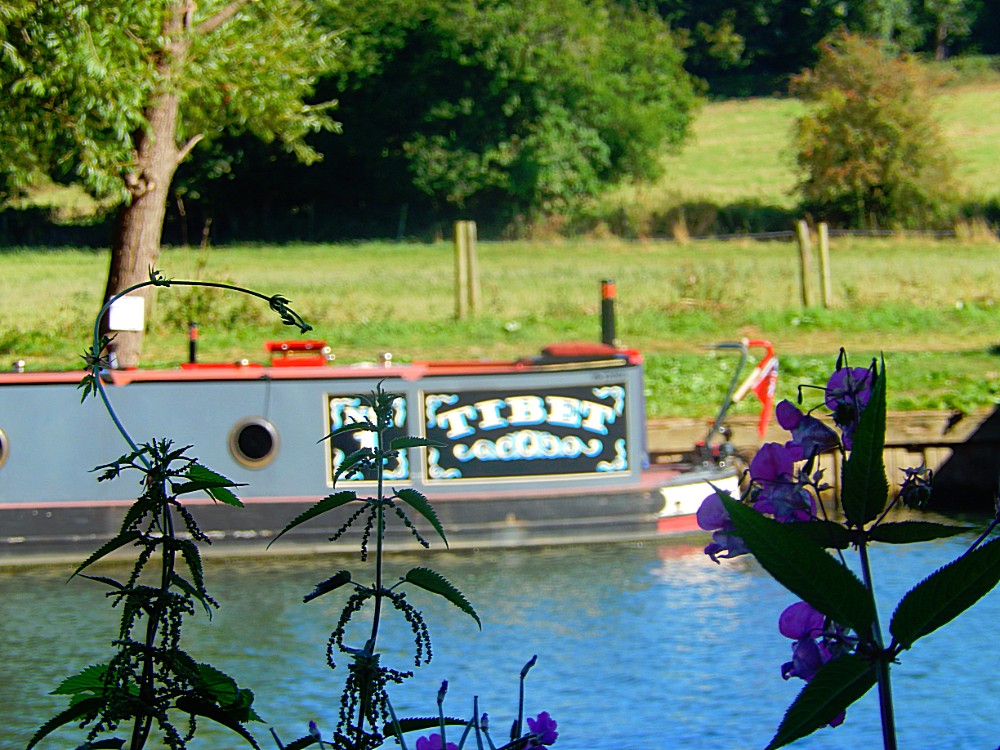 I bet this ship has never laid anker in Tibet 😉
I bet this ship has never laid anker in Tibet 😉
The path went under tree boughs of willows towards the small village of Sonning, crossed the river via Sonning Bridge (a stone bridge) and went on on the other side of the river…
Sonning Bridge
Sonning Bridge is a road bridge across the River Thames at Sonning, Berkshire. It links Sonning with Sonning Eye (Oxfordshire) and crosses the Thames on the reach above Shiplake Lock, just short of Sonning Lock. It is a brick arch bridge completed in 1775, to replace an earlier wooden bridge. The bridge has been the subject of many paintings and prints by artists and is a Grade II listed building. [2]
The road extends to the two Sonning Backwater Bridges. One is over the backwater downstream of the weir and the other is over the millrace which is between the two main branches.
The Thames Path crosses the river at this point.
It is rumoured that Dick Turpin used the bridge as an escape route from Berkshire to Oxfordshire to evade the authorities.
Dick Turpin
Richard “Dick” Turpin (bapt. 1705 – 7 April 1739) was an English highwayman whose exploits were romanticised following his execution in York for horse theft. Turpin may have followed his father’s trade as a butcher early in life, but, by the early 1730s, he had joined a gang of deer thieves and, later, became a poacher, burglar, horse thief and killer. He is also known for a fictional 200-mile (320 km) overnight ride from London to York on his horse Black Bess, a story that was made famous by the Victorian novelist William Harrison Ainsworth almost 100 years after Turpin’s death.
Turpin’s involvement in the crime with which he is most closely associated—highway robbery—followed the arrest of the other members of his gang in 1735. He then disappeared from public view towards the end of that year, only to resurface in 1737 with two new accomplices, one of whom he may have accidentally shot and killed. Turpin fled from the scene and shortly afterwards killed a man who attempted his capture. Later that year, he moved to Yorkshire and assumed the alias of John Palmer. While he was staying at an inn, local magistrates became suspicious of “Palmer” and made enquiries as to how he funded his lifestyle. Suspected of being a horse thief, “Palmer” was imprisoned in York Castle, to be tried at the next assizes. Turpin’s true identity was revealed by a letter he wrote to his brother-in-law from his prison cell, which fell into the hands of the authorities. On 22 March 1739, Turpin was found guilty on two charges of horse theft and sentenced to death; he was executed on 7 April 1739.
Turpin became the subject of legend after his execution, romanticised as dashing and heroic in English ballads and popular theatre of the 18th and 19th centuries and in film and television of the 20th century.
Sonning
Directly after the crossing the bridge the Path was on the right and followede the river again beneath the trees. After maybe 100 metres, there was a small path leaving the river in to Sonning.
Sonning is a village and civil parish in Berkshire, England, on the River Thames, east of Reading. The village was described by Jerome K. Jerome in his book Three Men in a Boat as “the most fairy-like little nook on the whole river”.
He first reached beautiful St. Andrews Church.
St Andrews Church
St Andrew’s Church is Church of England parish church in a central position in the village of Sonning, close to the River Thames, in the English county of Berkshire. It is notable for its fine array of church monuments and for being the successor of an Anglo-Saxon Cathedral.
The historic Bulle Inn is immediately next to the church away from the river and is owned by the church.
Then the Wandelgek left the surrounding graveyard and walked to The Bull Inn…
Bull Inn
The Bull Inn, also known as The Bull at Sonning or just The Bull, is an historic public house — now also a restaurant and hotel — in the centre of the village of Sonning in Berkshire, England.
Overview
Traditionally, the Bull was owned by the Bishop of Salisbury, whose palace once stood nearby. Today it is owned by St Andrew’s Church who currently rent it to Fullers. The present 16th century timber-framed building, it is suggested, was a hospitium for pilgrims visiting the relics of the mysterious St Sarik at the adjoining St Andrew’s Church. The name stems from bulls which supported the coat of arms of Sir Henry Neville. He was steward at the palace after it was sold to Queen Elizabeth I.
The inn was featured in Jerome K. Jerome’s book Three Men in a Boat:
If you stop at Sonning, put up at the “Bull,” behind the church. It is a veritable picture of an old country inn, with green, square courtyard in front, where, on seats beneath the trees, the old men group of an evening to drink their ale and gossip over village politics; with low, quaint rooms and latticed windows, and awkward stairs and winding passages.
The two storey timber-framed building dates from the late 16th century with 19th/20th century additions. It was Grade II listed in 1967. Opposite is a well-hidden Lutyens-designed house, Deanery Garden.
Customers have included the American film star George Clooney and his British wife, the human rights lawyer Amal Clooney, who purchased the Mill House in Sonning Eye, just over the River Thames from Sonning, in 2014.
Again The Wandelgek ordered a pint… No not a pint of Fullers but again freshly squeezed orange juice with ice cubes …
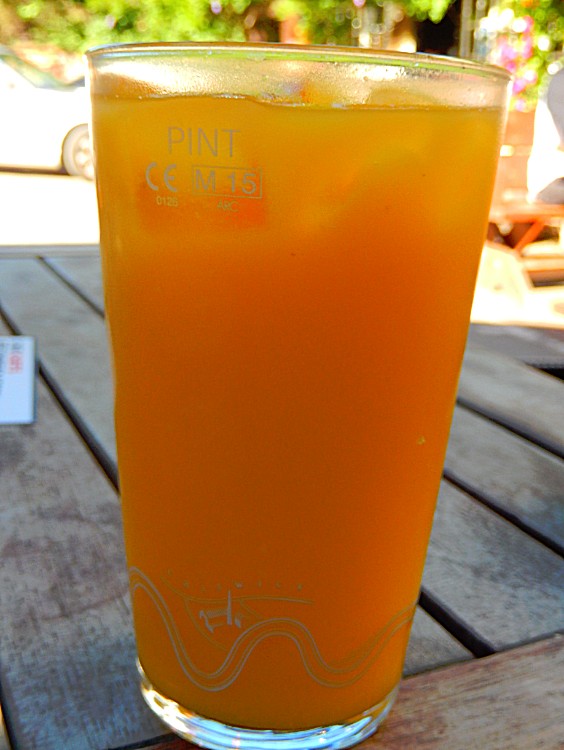
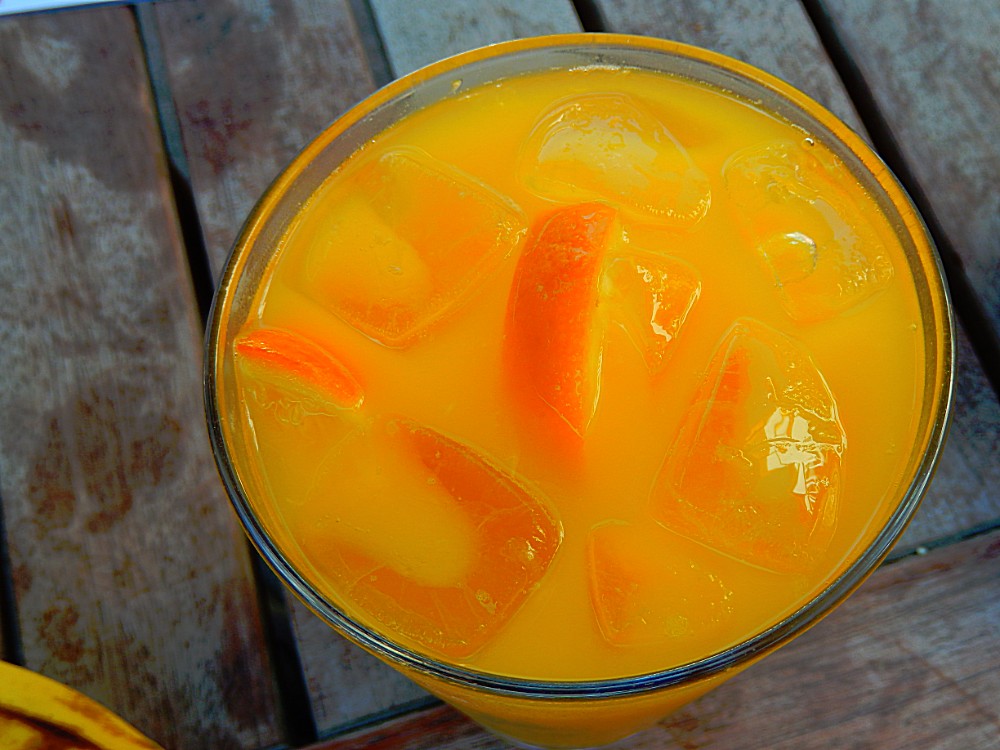
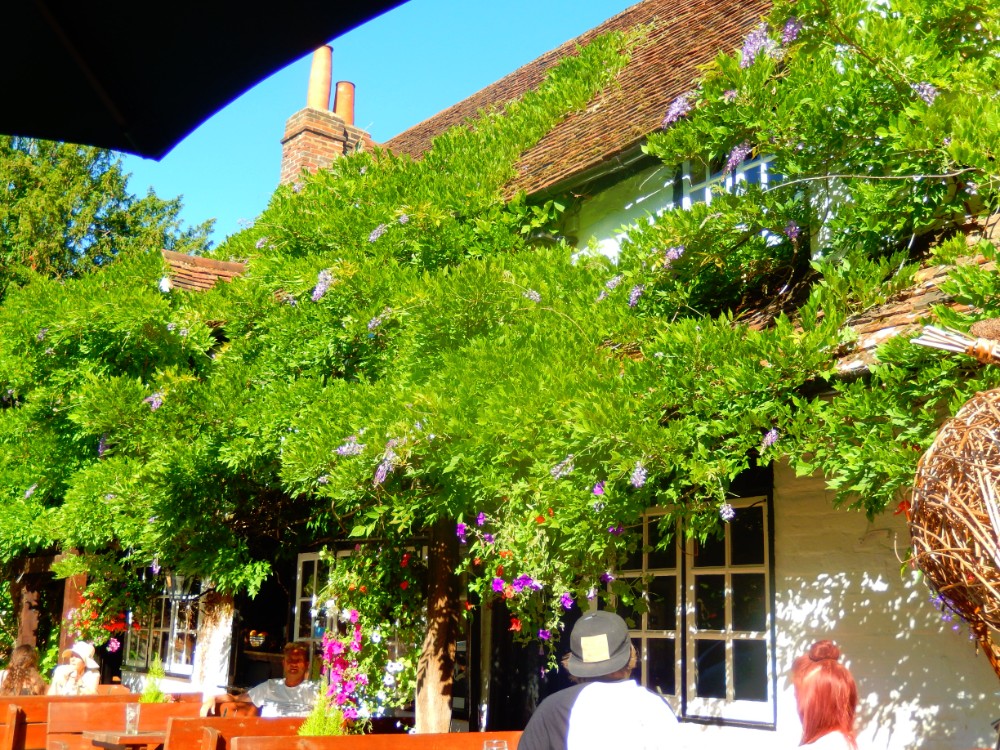 Then The Wandelgek walked towards the Thames again and started to follow the last strech of this walk. He decided that he wouldn’t finish the walk to Pangebourne due to the extra long stay at the museum in Henley. It would be to late to arrive in Pangebourne and still get a decent meal overthere. Instead he decided to walk to Reading and from there take the train to Pangebourne which was only 2 stations away.
Then The Wandelgek walked towards the Thames again and started to follow the last strech of this walk. He decided that he wouldn’t finish the walk to Pangebourne due to the extra long stay at the museum in Henley. It would be to late to arrive in Pangebourne and still get a decent meal overthere. Instead he decided to walk to Reading and from there take the train to Pangebourne which was only 2 stations away.
But first that last stretch…
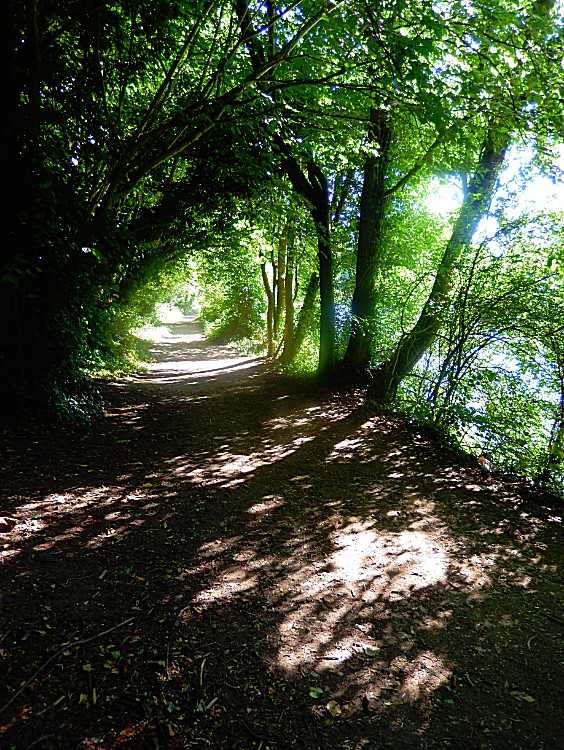
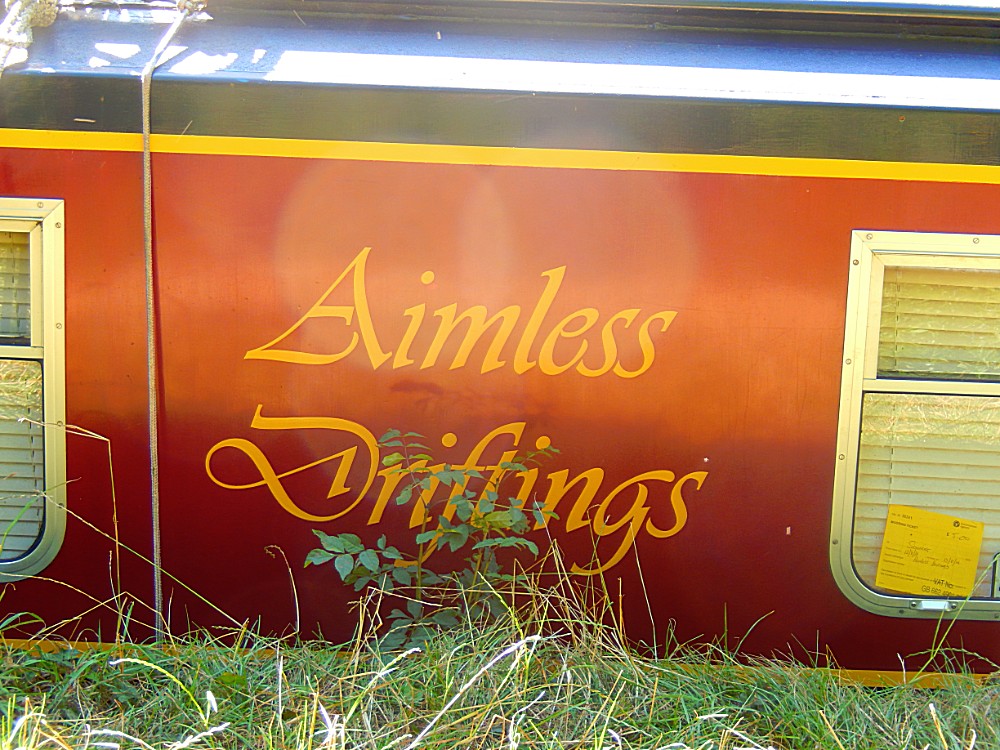
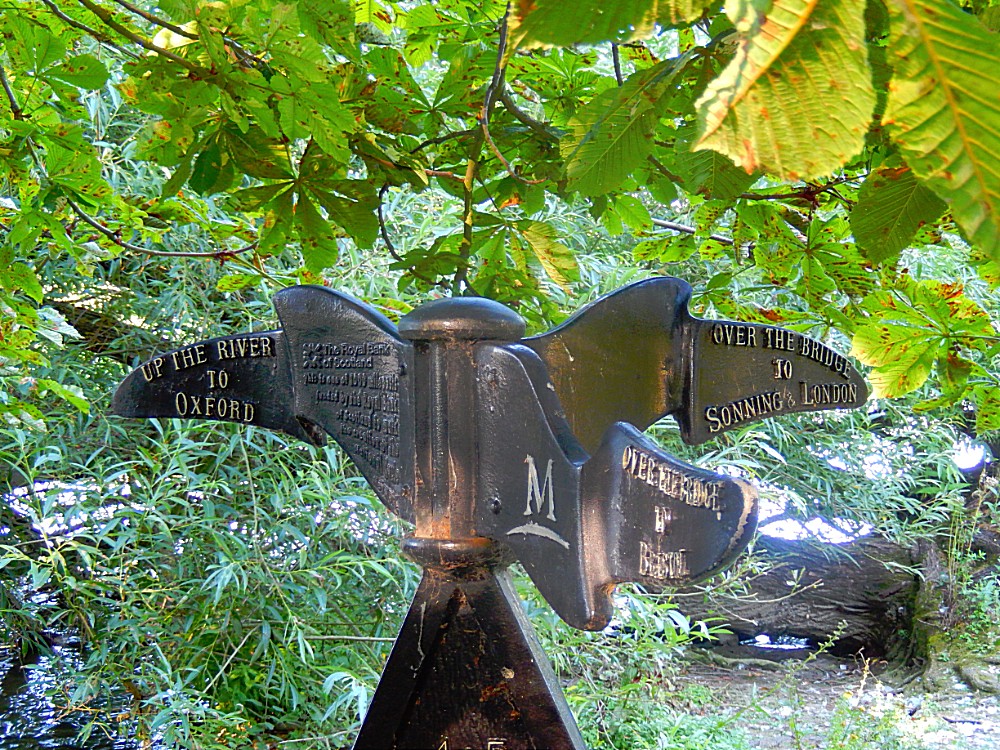
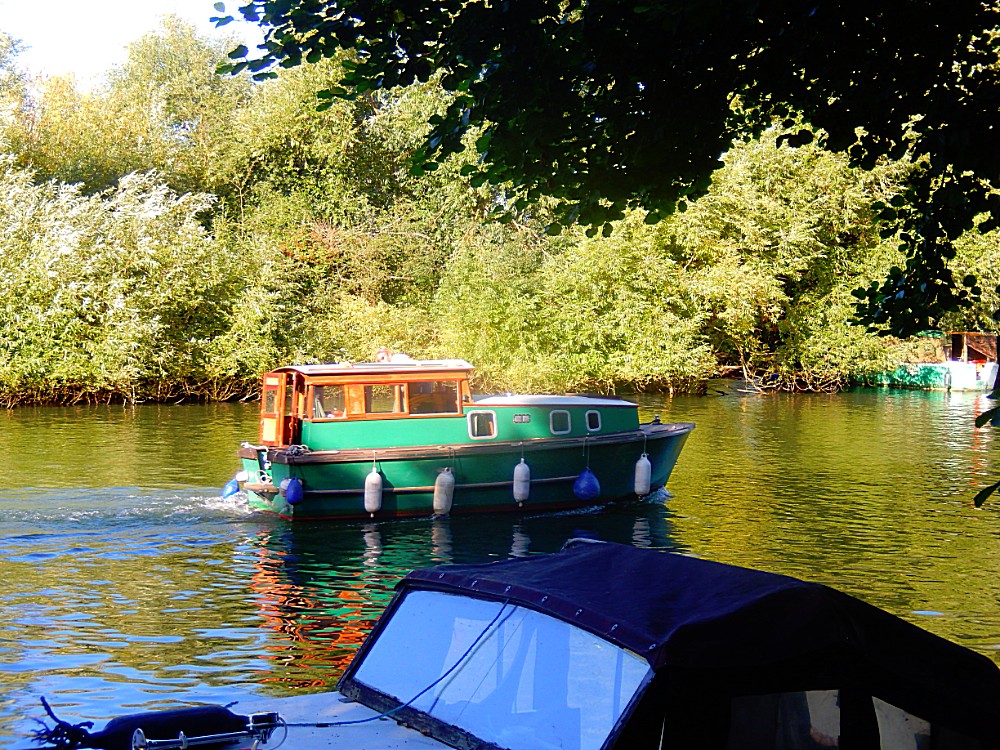
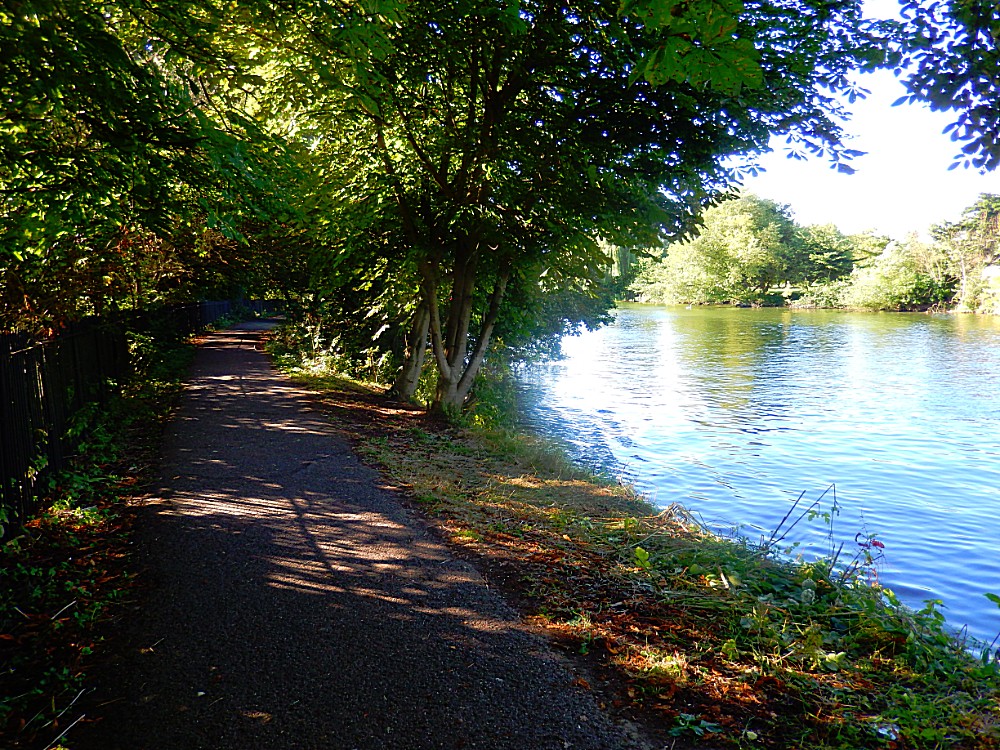 The last stretch followed the passed Sonning Lock and then towards the industrial town of Reading stayed quite green because the path kept closely to the river. Then it reaches the spot where the Kennet and Avon canal flows into the Thames and it crosses the canal via a gaunt old horseshoe bridge. Beyond the bridge the path stays close to the river going into the Kings Meadow.
The last stretch followed the passed Sonning Lock and then towards the industrial town of Reading stayed quite green because the path kept closely to the river. Then it reaches the spot where the Kennet and Avon canal flows into the Thames and it crosses the canal via a gaunt old horseshoe bridge. Beyond the bridge the path stays close to the river going into the Kings Meadow.
At the end it reaches Reading Bridge…
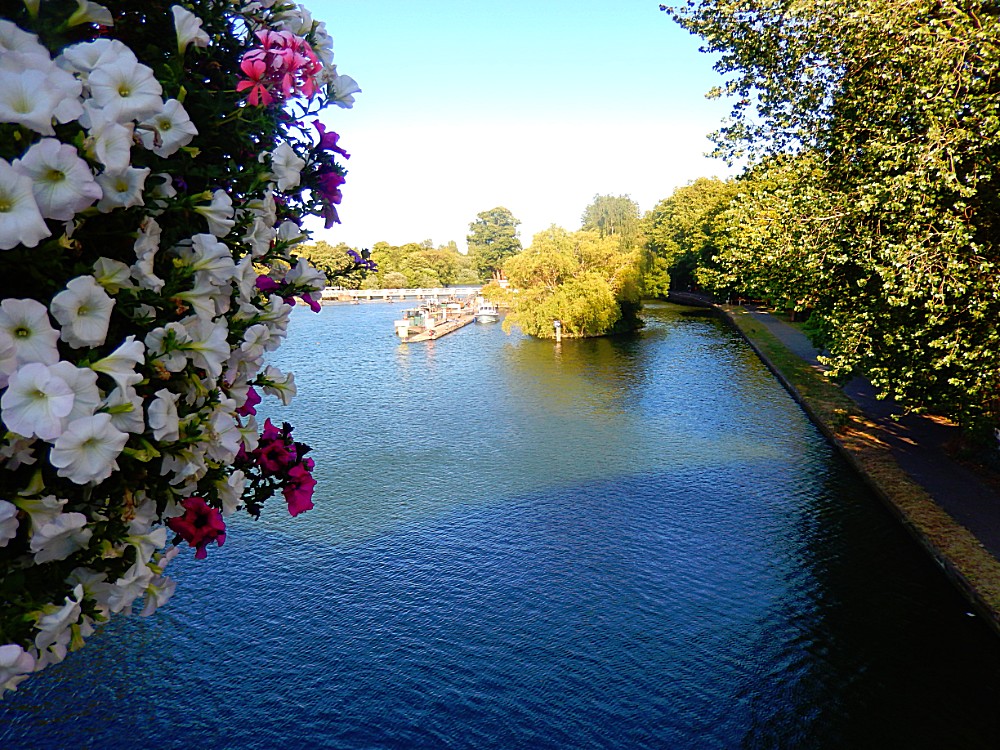
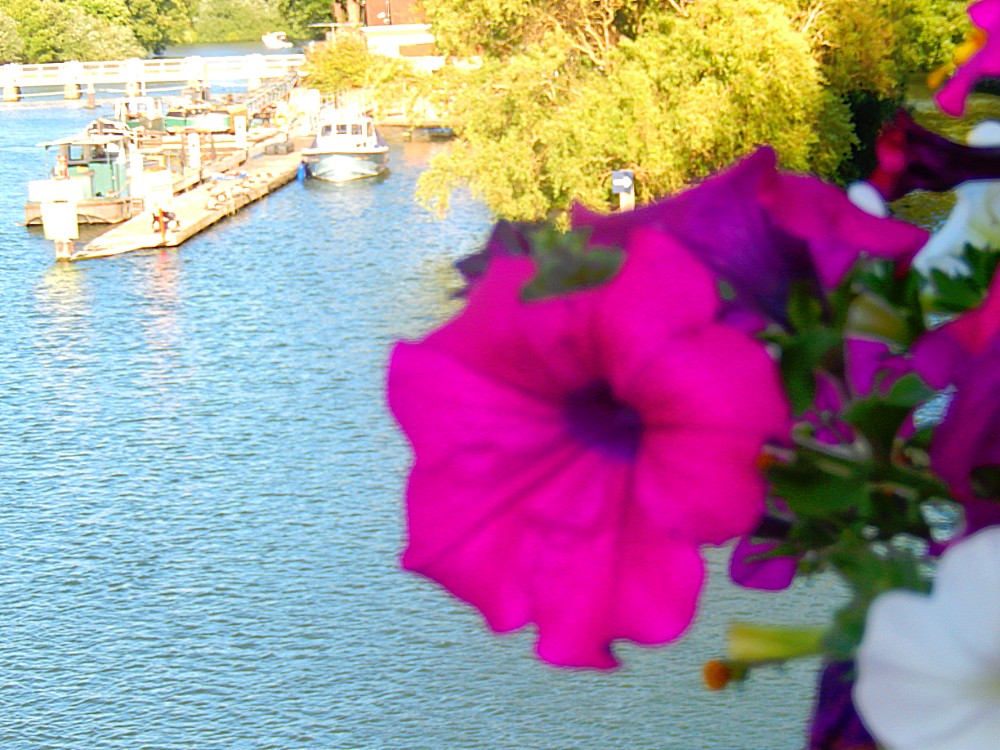 From the bridge The Wandelgek left the Thames path which kept to the river and it was a short walk up to the Railway station where he took the train to Pangebourne…
From the bridge The Wandelgek left the Thames path which kept to the river and it was a short walk up to the Railway station where he took the train to Pangebourne…
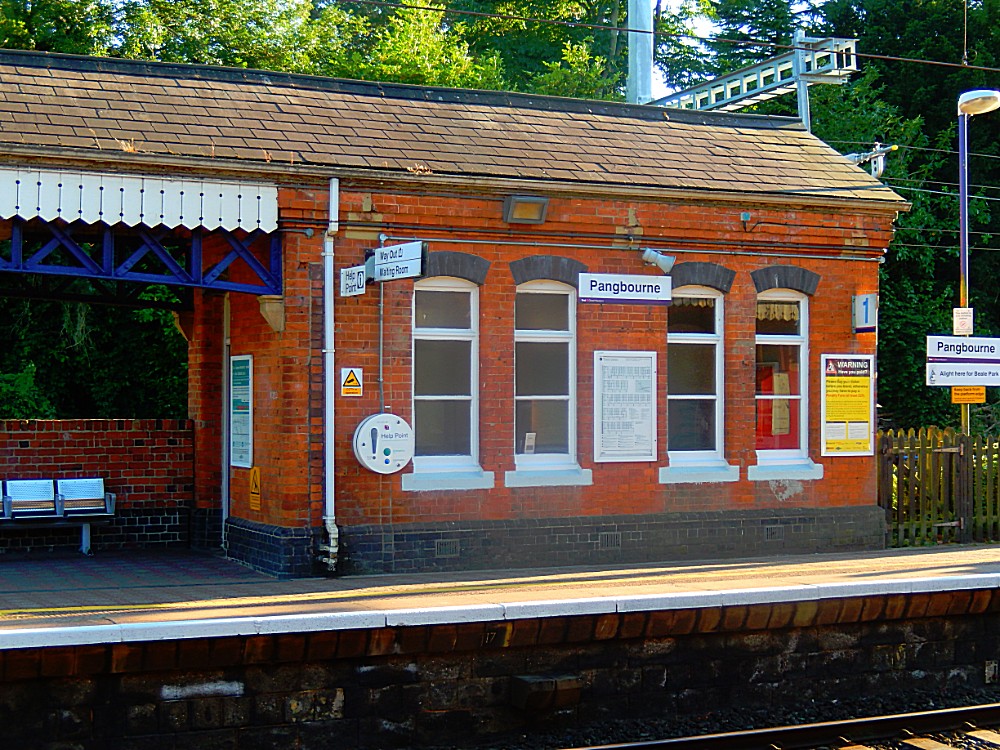
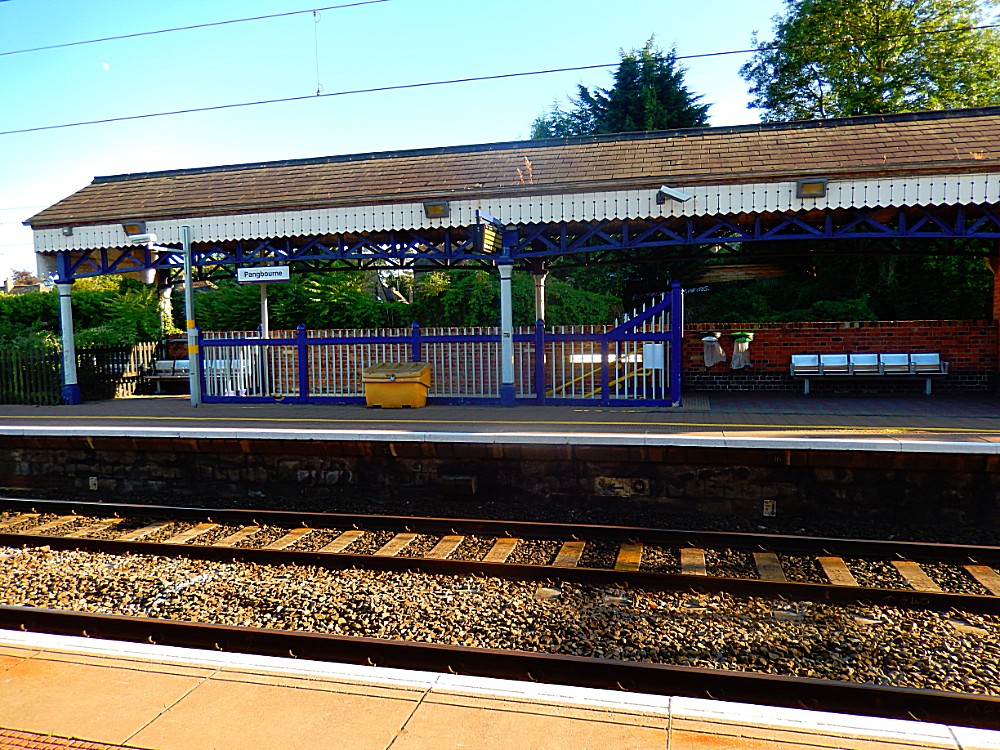 After arriving at Pangebourne, he quickly walked towards the river and the Weir View House, where he would stay for the night. It was a lovely place run by friendly and flexible hosts. After a quick shower he left the house and just had to cross the road which was next to the river, to reach The Swan.
After arriving at Pangebourne, he quickly walked towards the river and the Weir View House, where he would stay for the night. It was a lovely place run by friendly and flexible hosts. After a quick shower he left the house and just had to cross the road which was next to the river, to reach The Swan.
This was a beautiful restaurant right next to the river and the weir. On the terrace it was still warm so The Wandelgek ordered a pint… Yesss, finally a pint of Guiness and no doubt a Bitter too 🙂
The view over the weir was great…
The food was delicious…
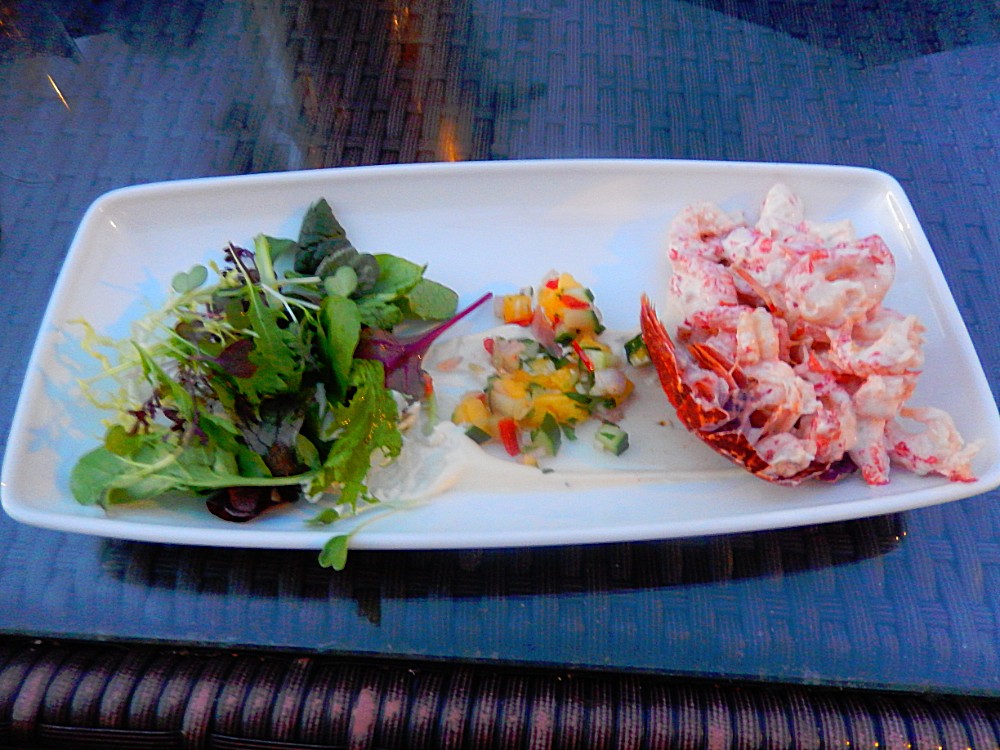
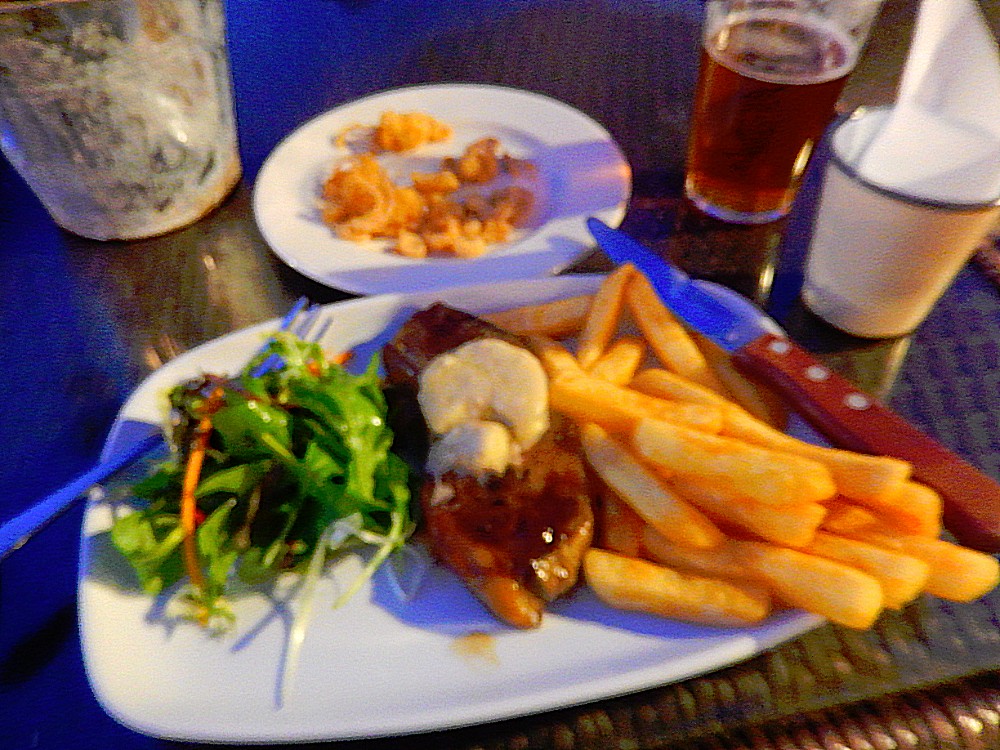 Then it started to get a bit more chilly and The Wandelgek went inside. The ceiling of the restaurant was completely covered with skiffs and canoes…
Then it started to get a bit more chilly and The Wandelgek went inside. The ceiling of the restaurant was completely covered with skiffs and canoes…
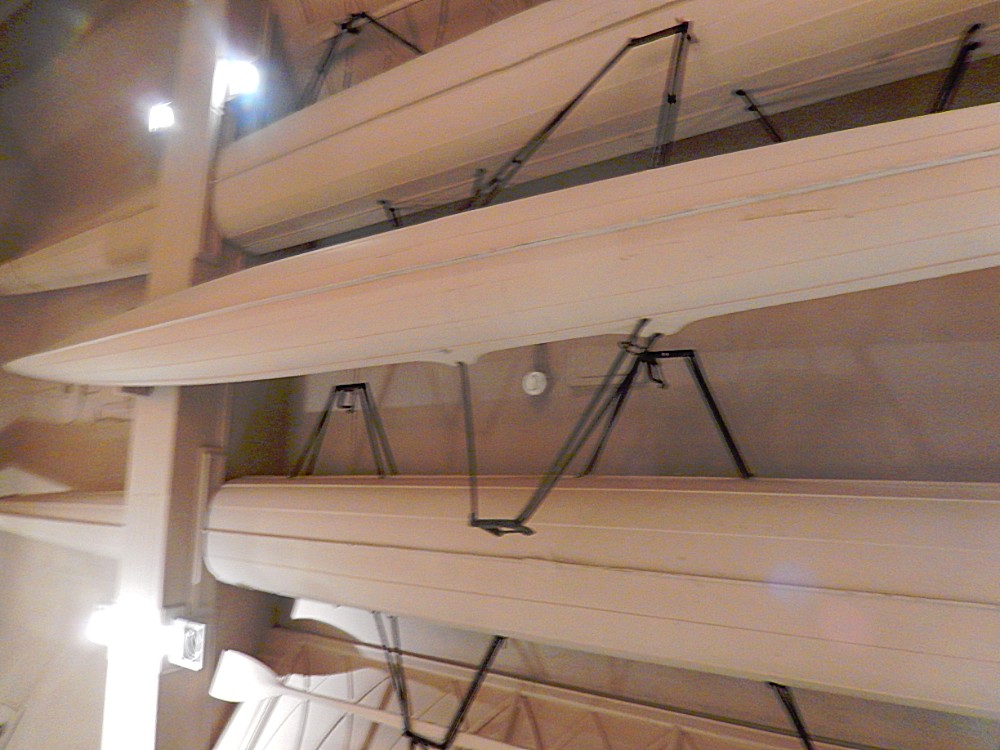 After this The wandelgek returned to the Weir View House and went to bed early because he wanted to visit Whithchurch-on-Thames very early before leaving for his next destination…
After this The wandelgek returned to the Weir View House and went to bed early because he wanted to visit Whithchurch-on-Thames very early before leaving for his next destination…

